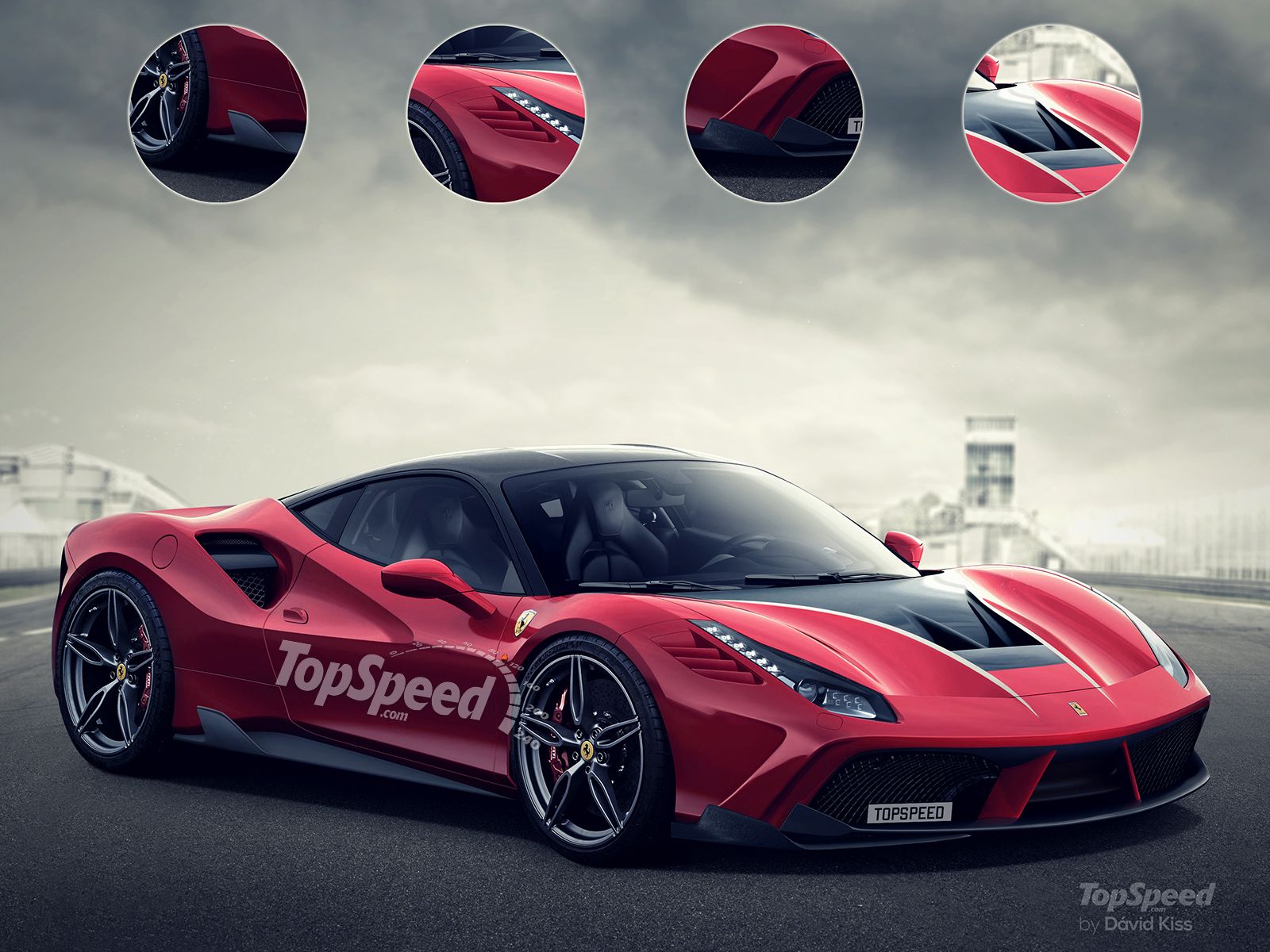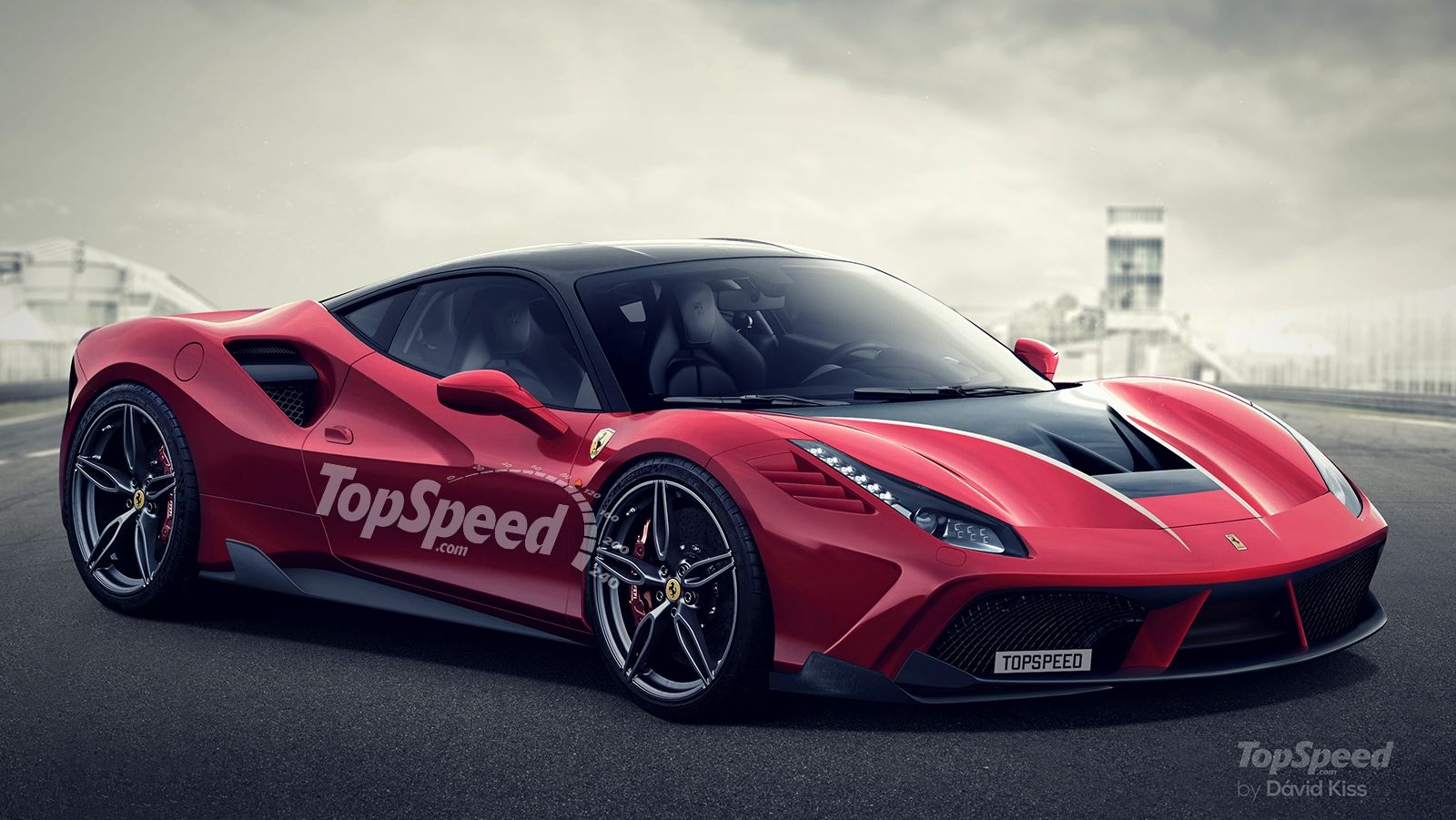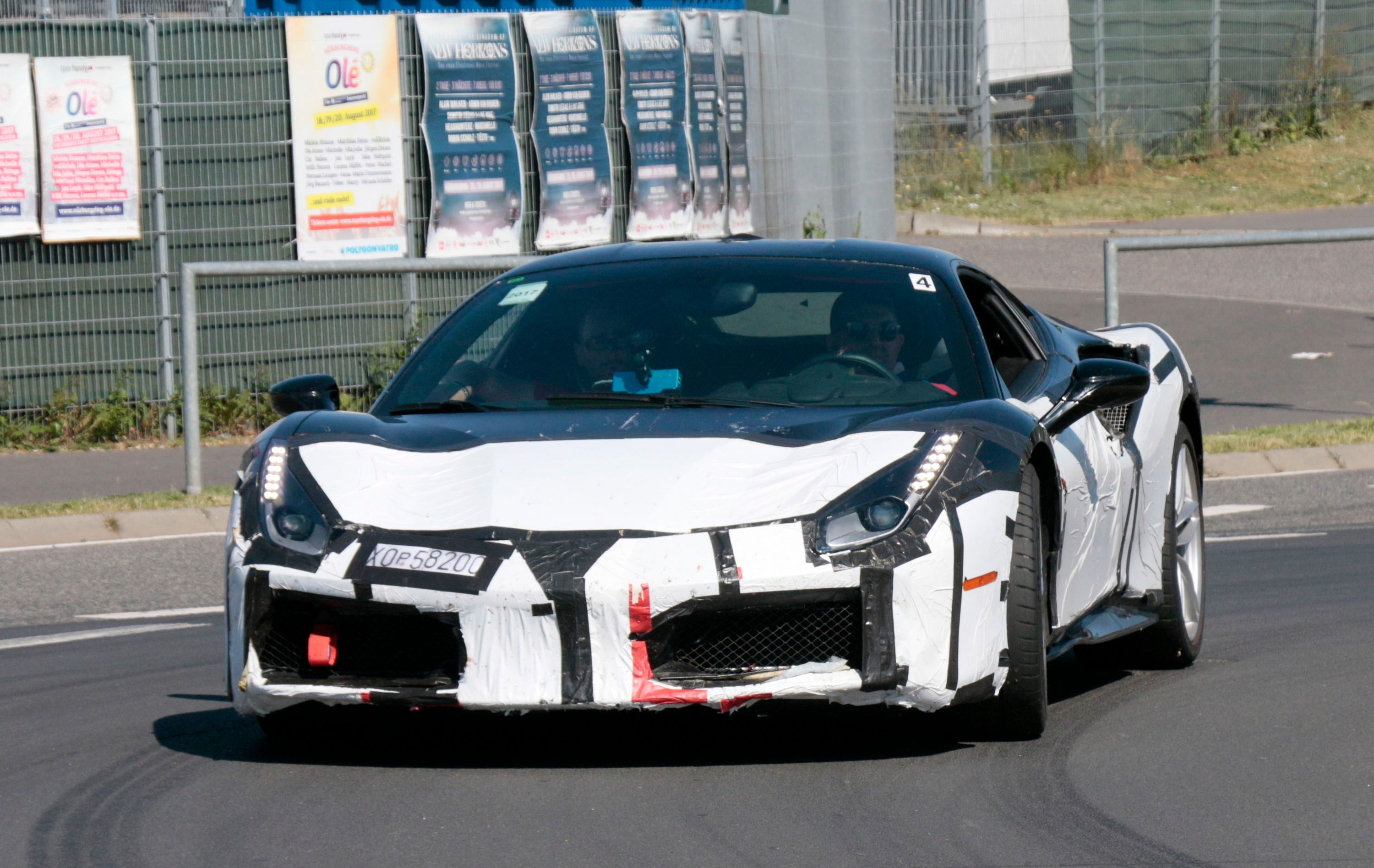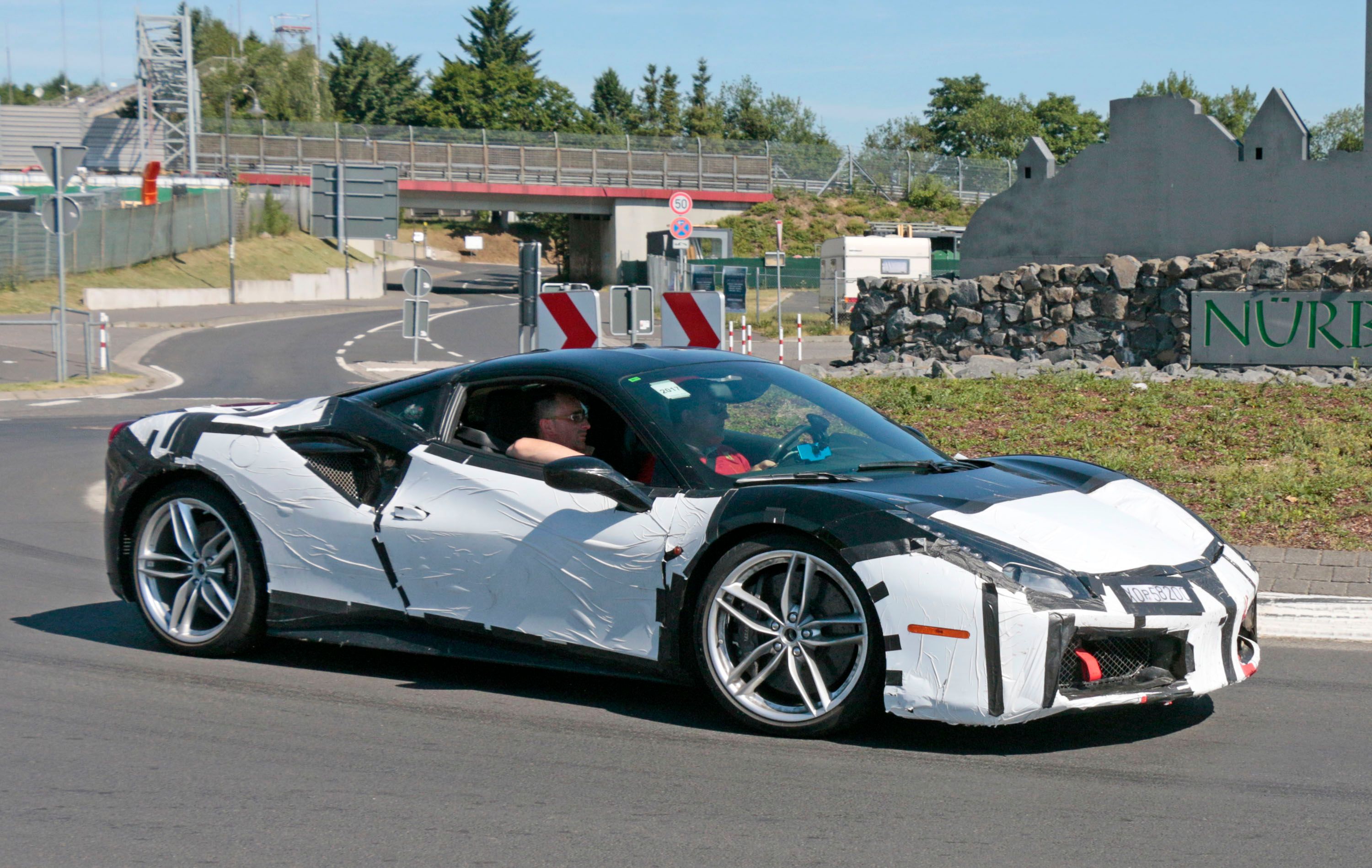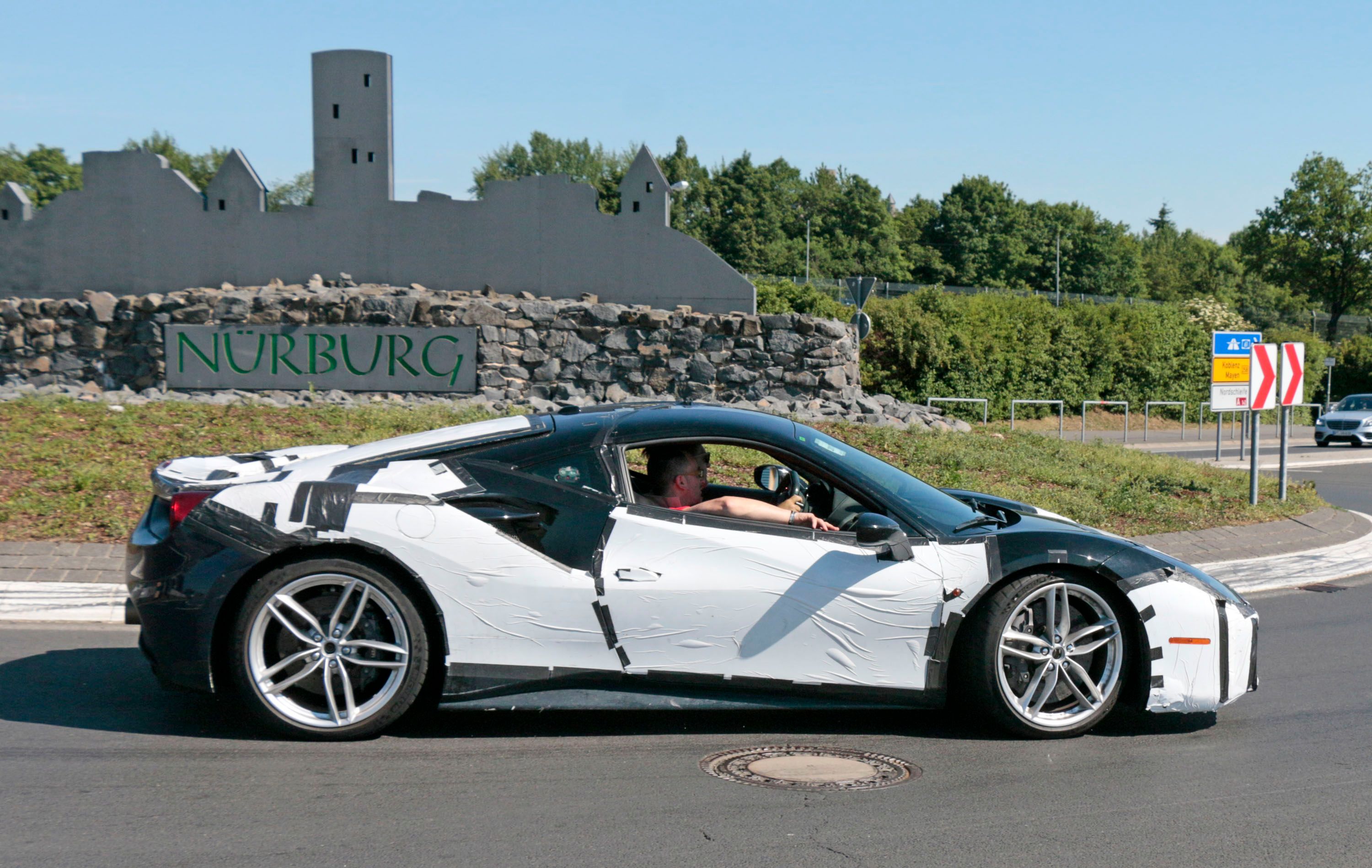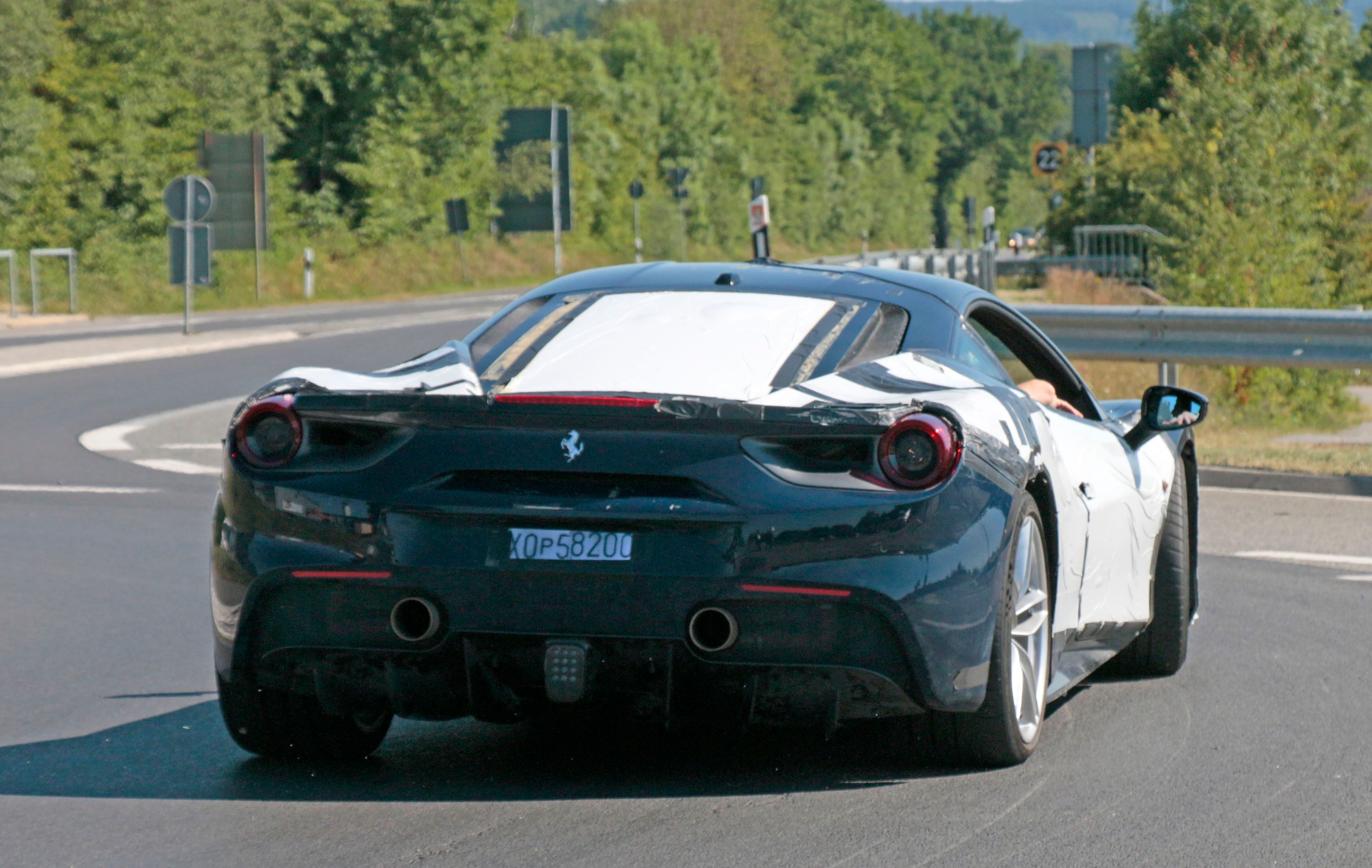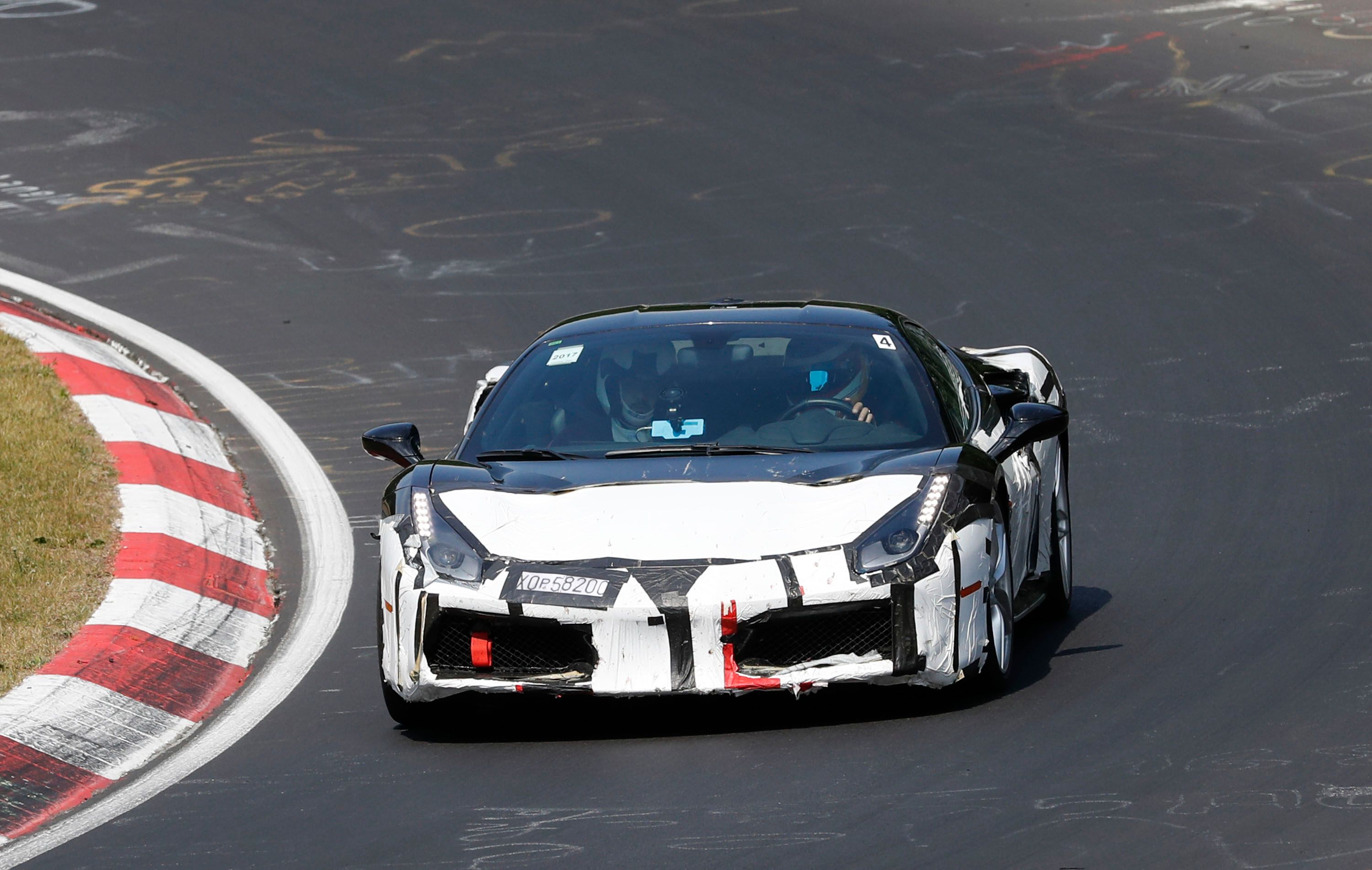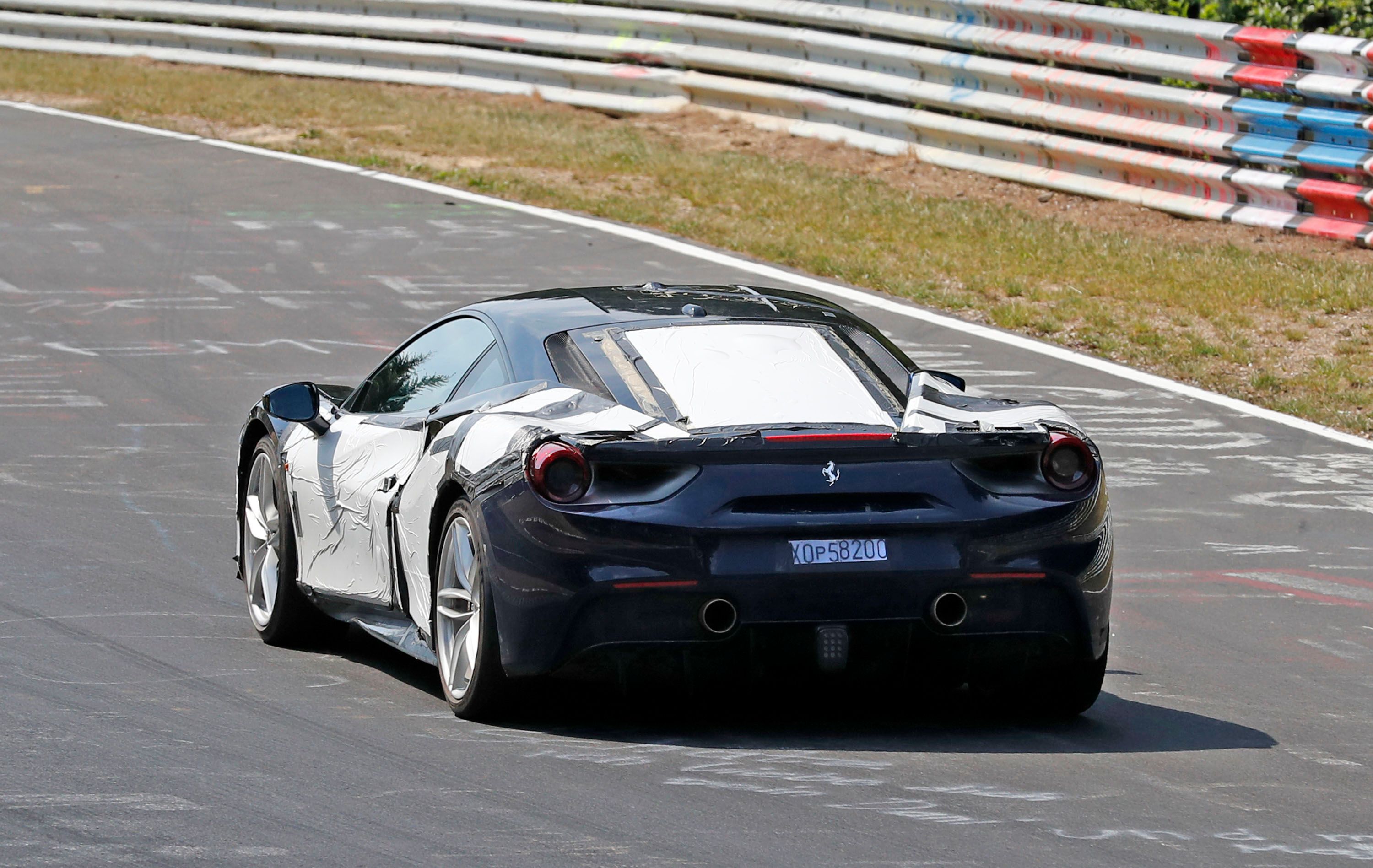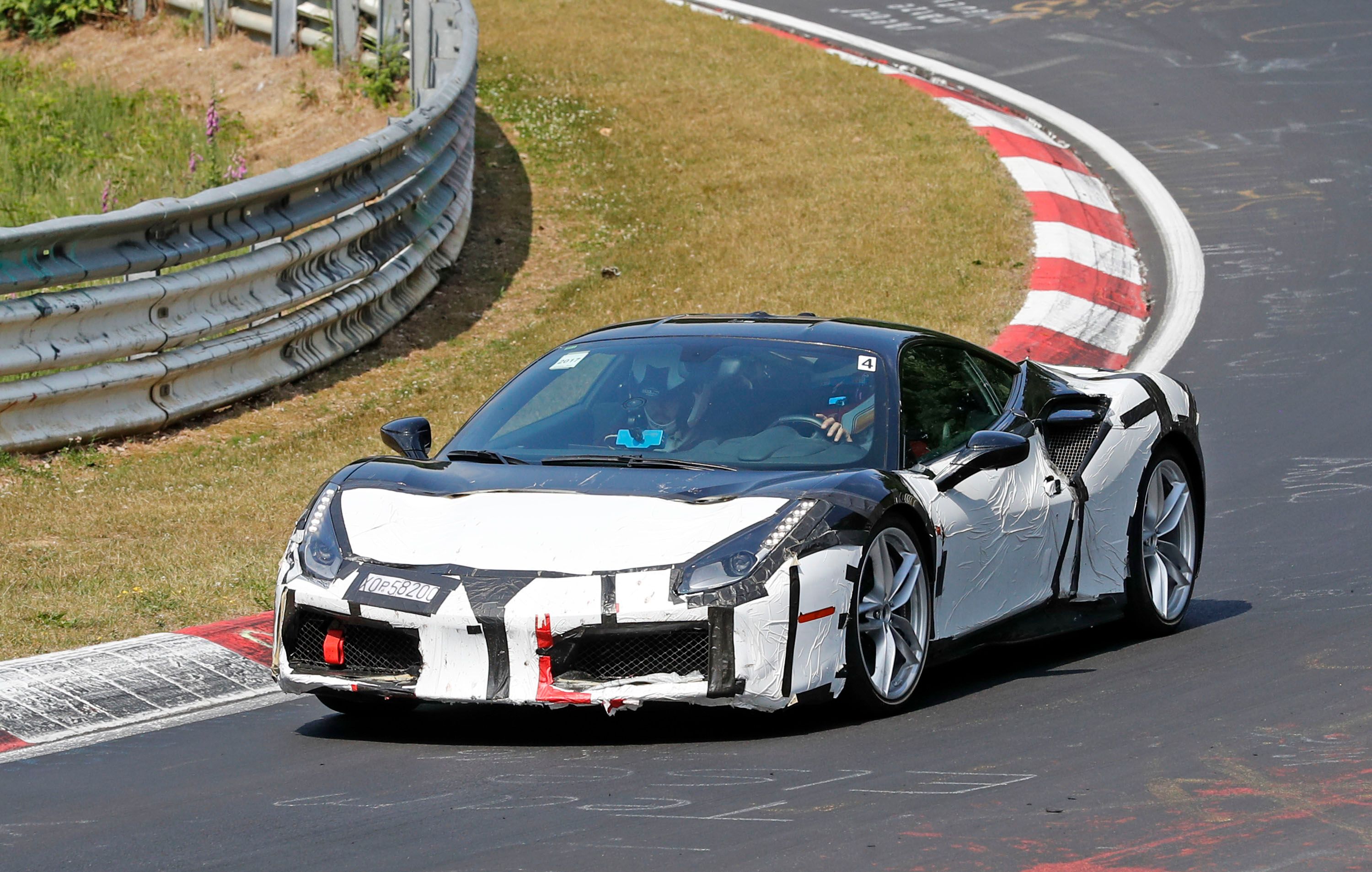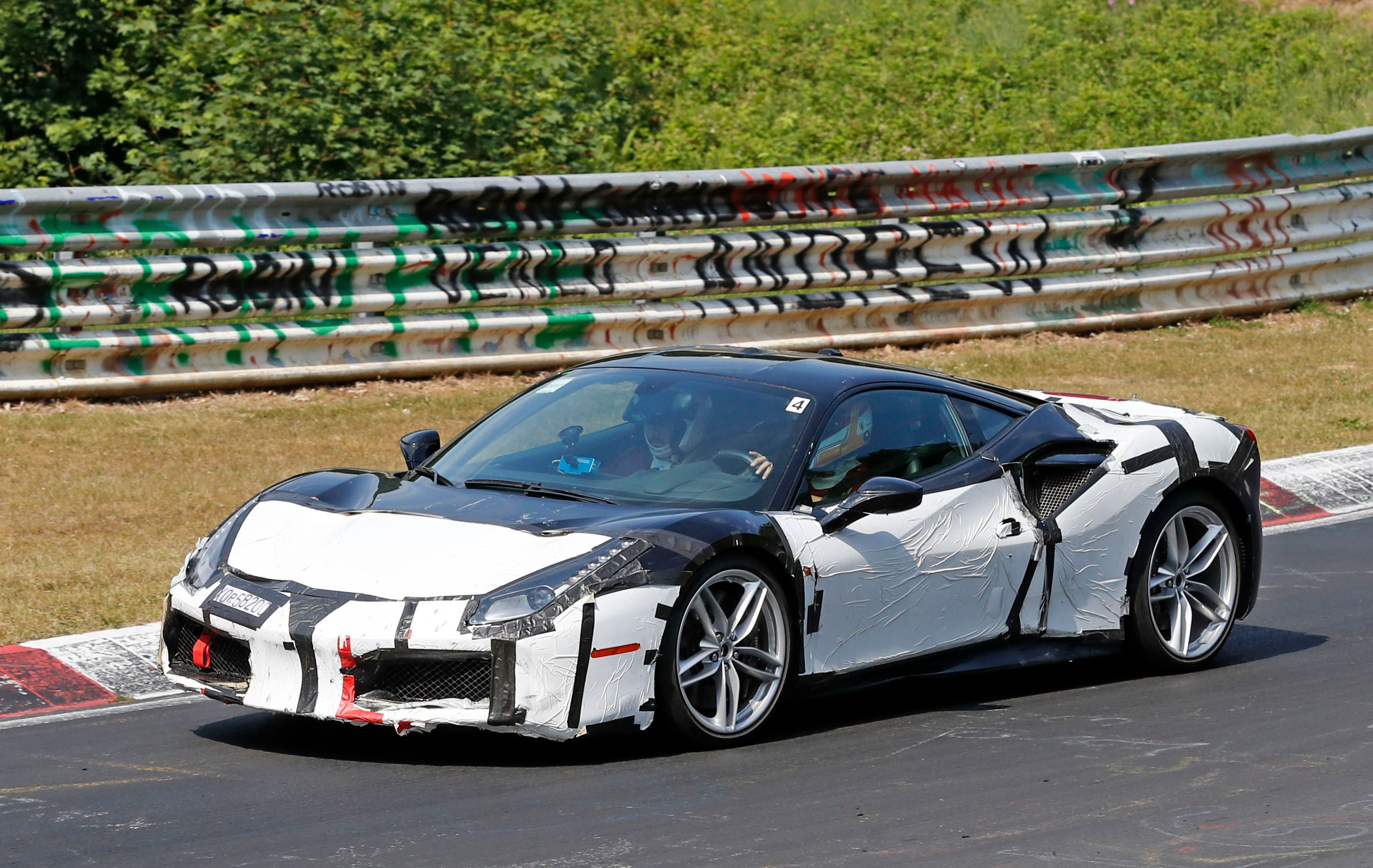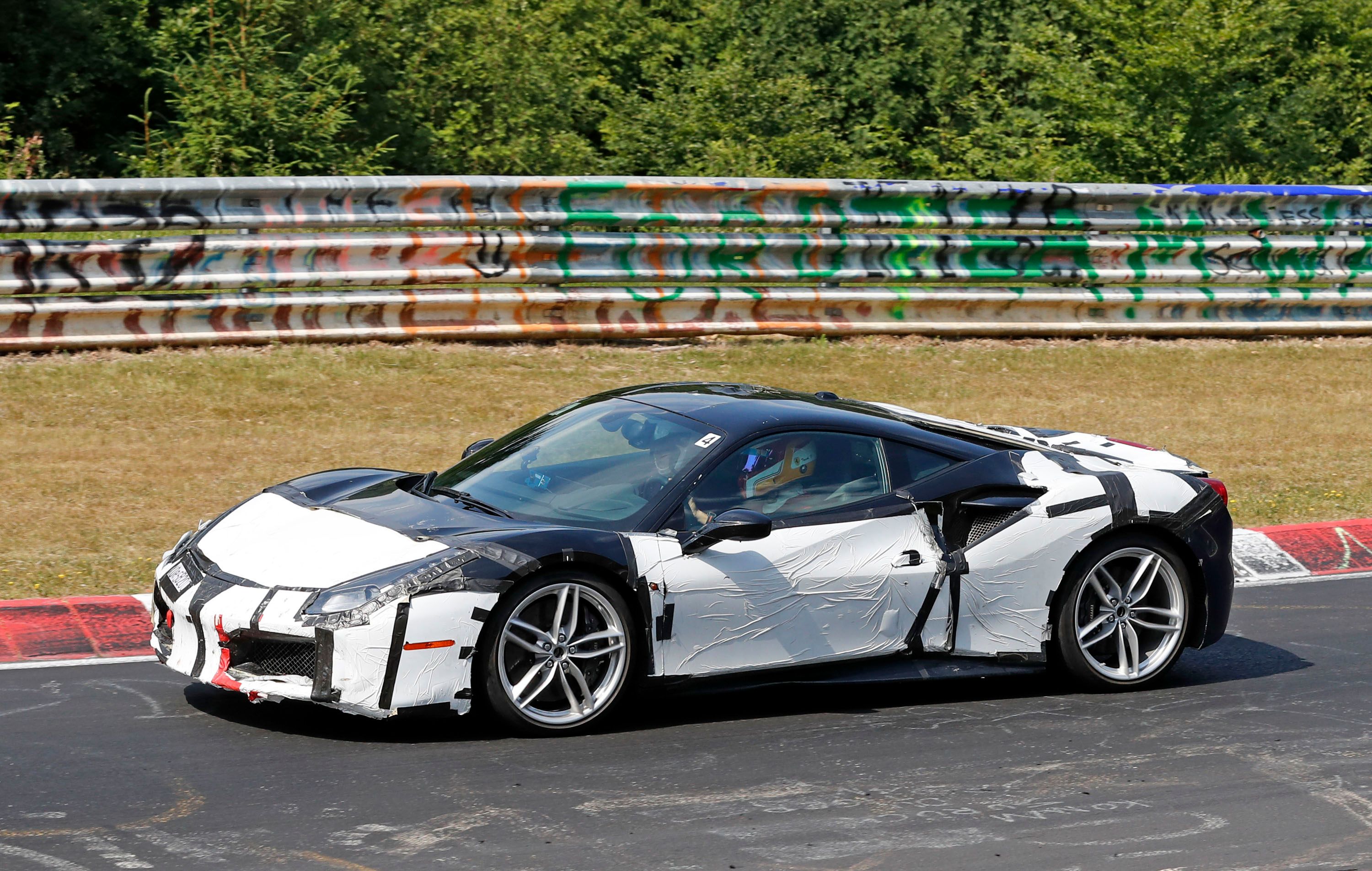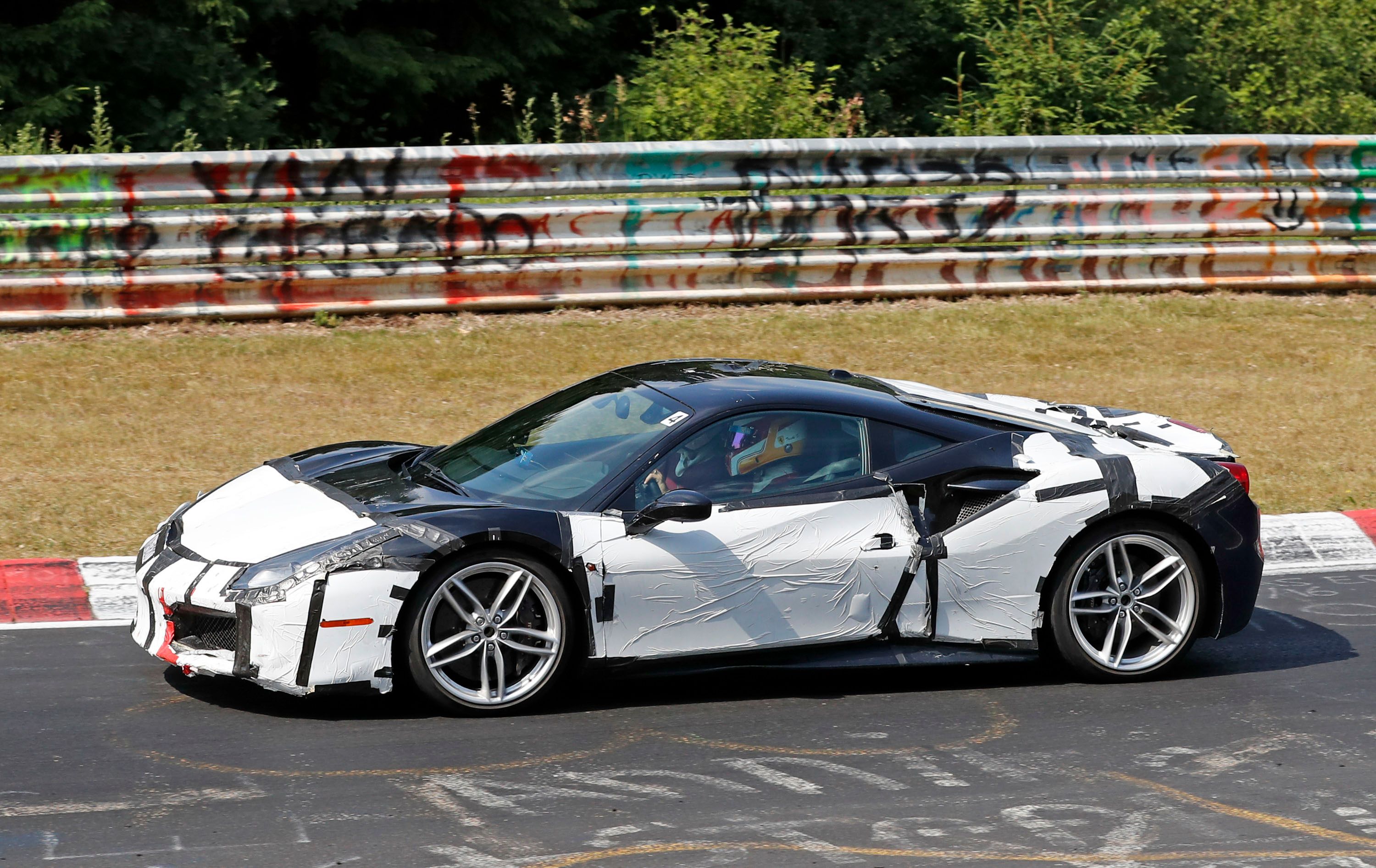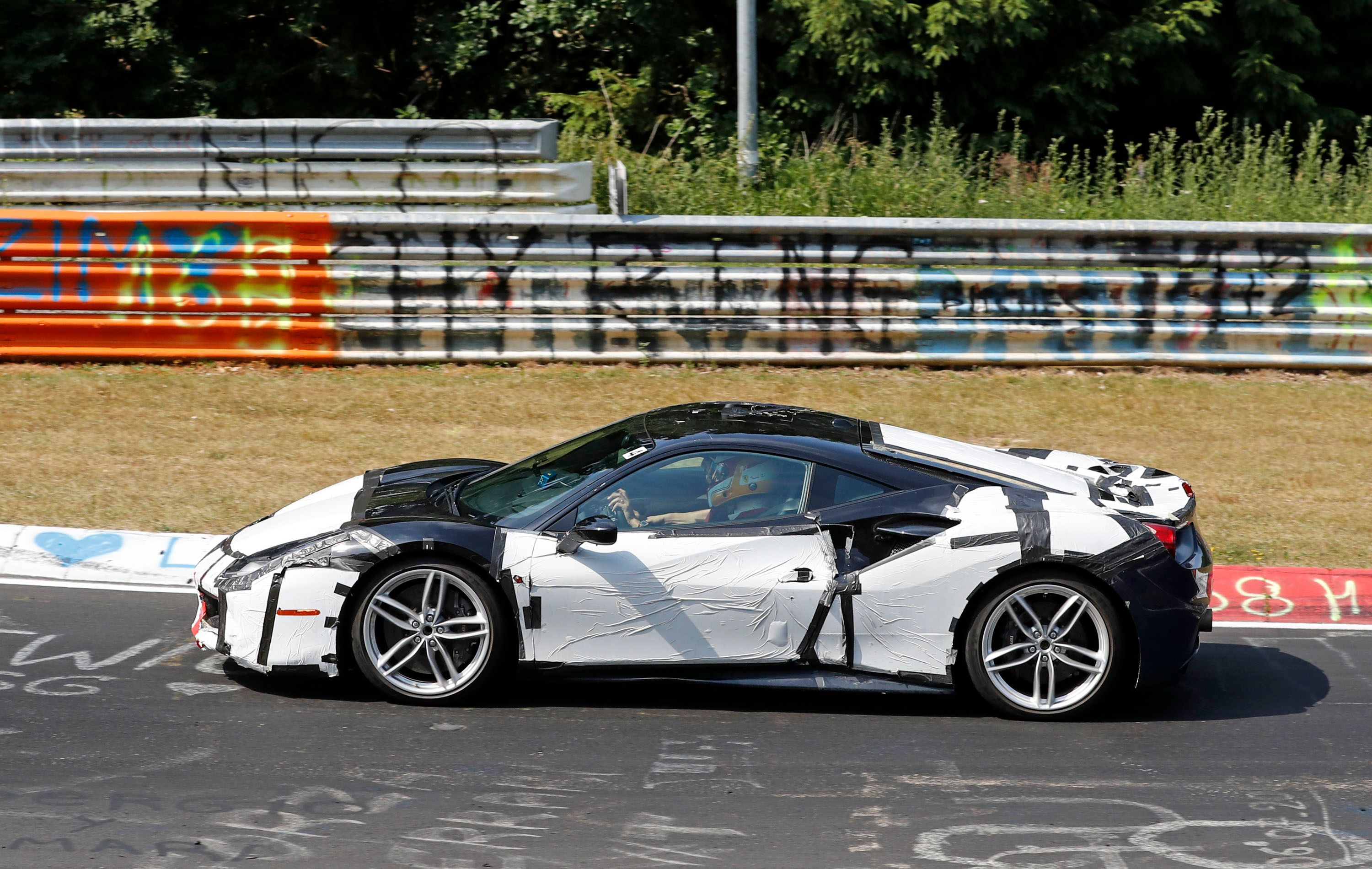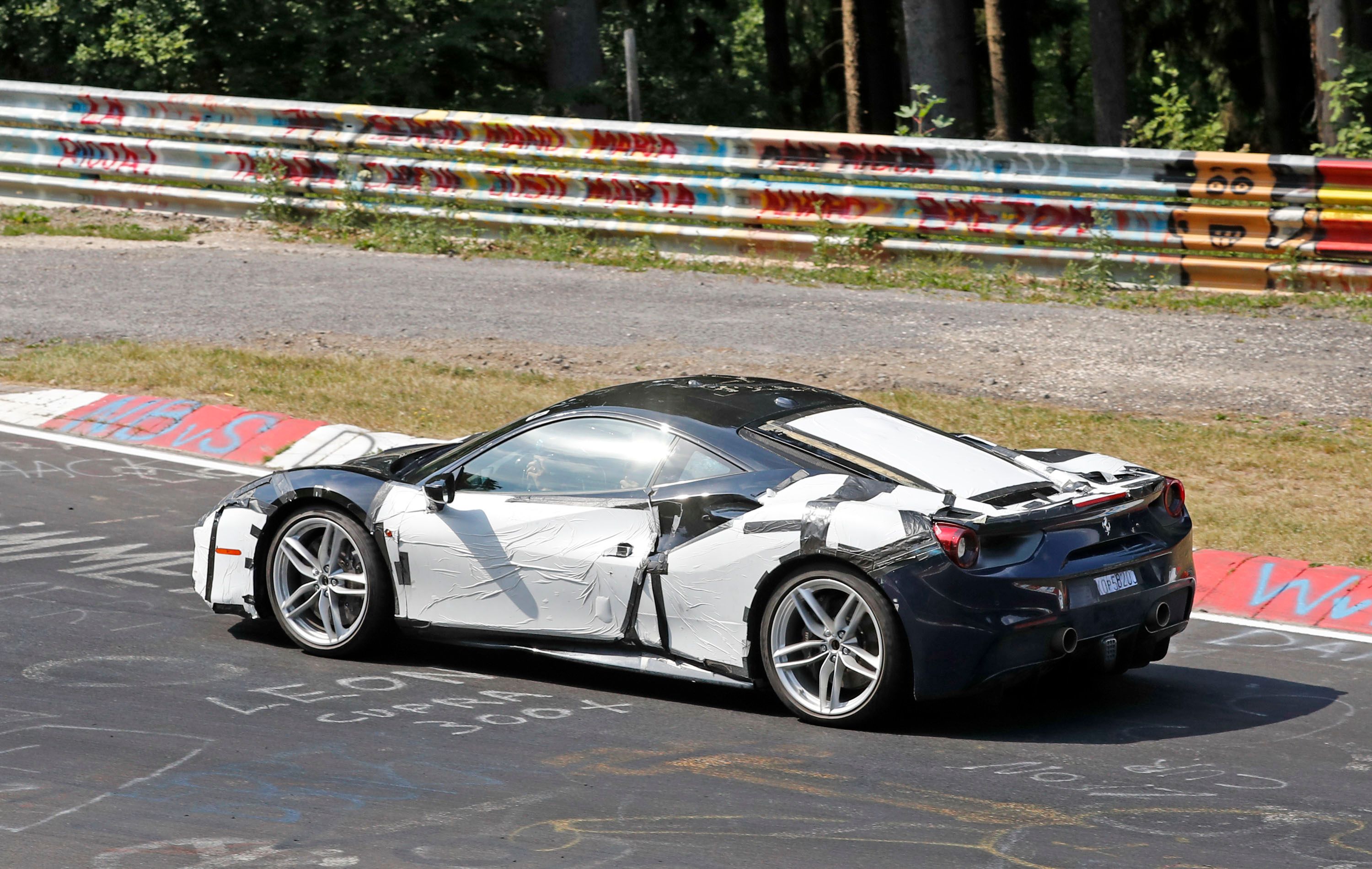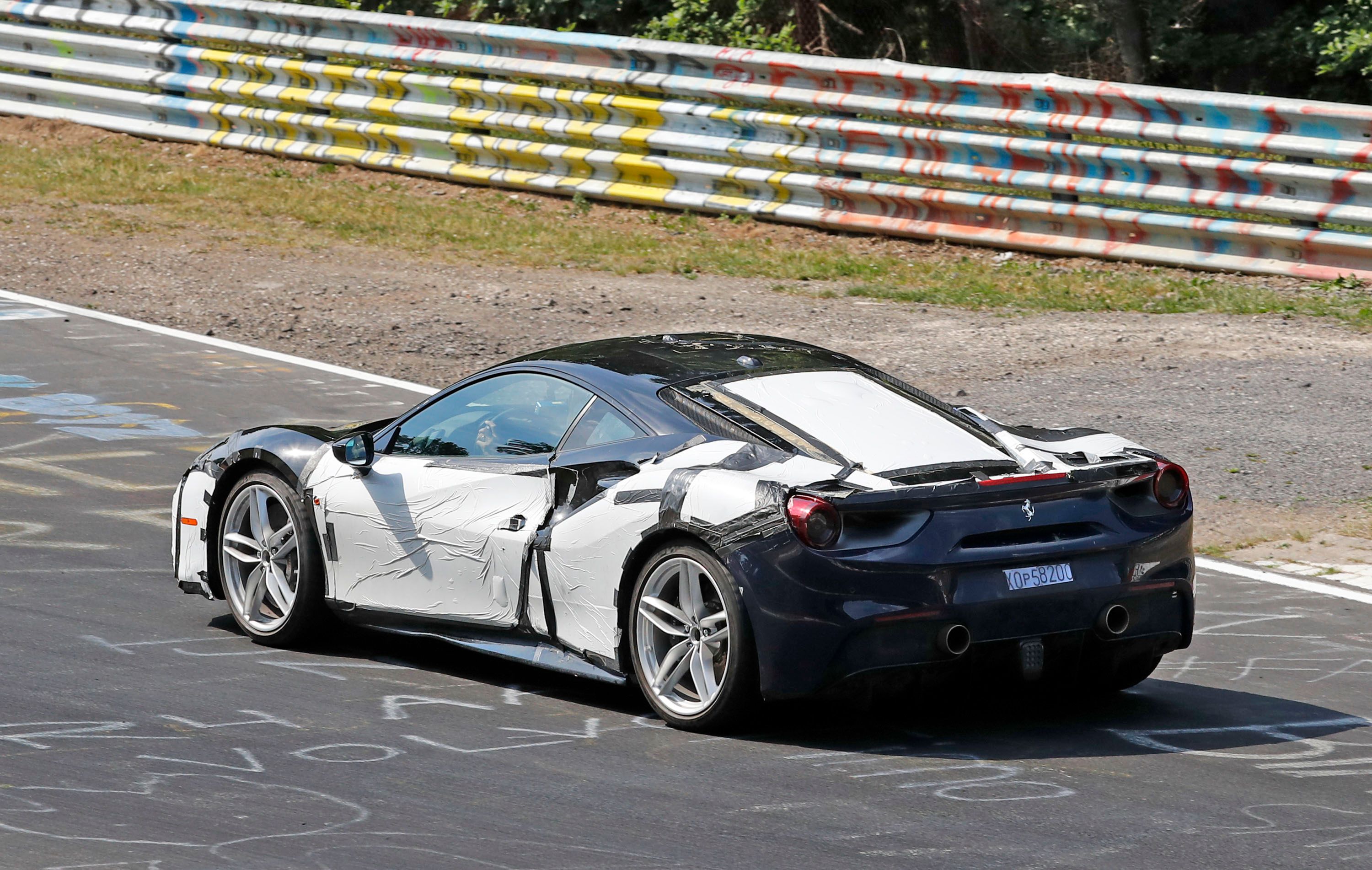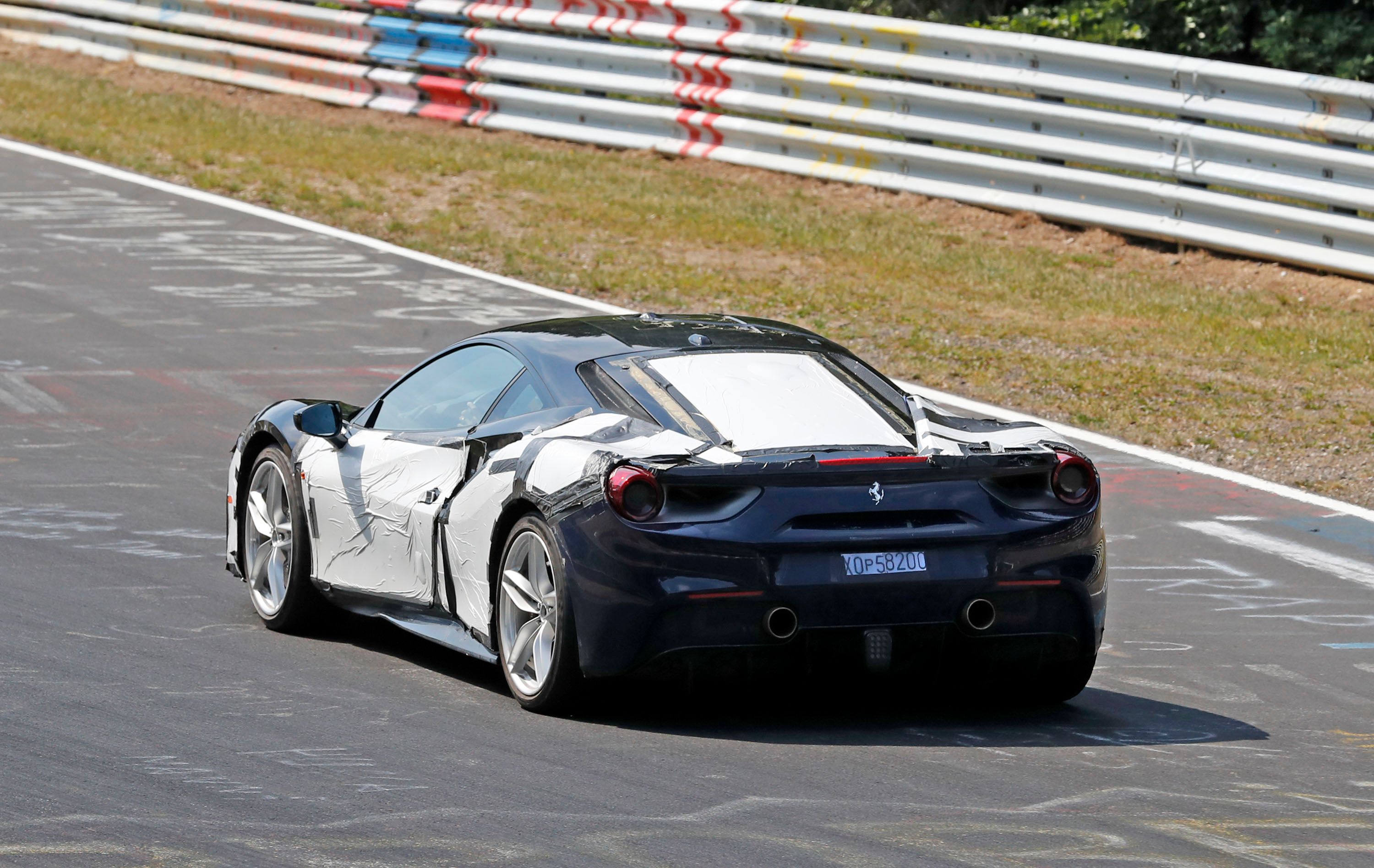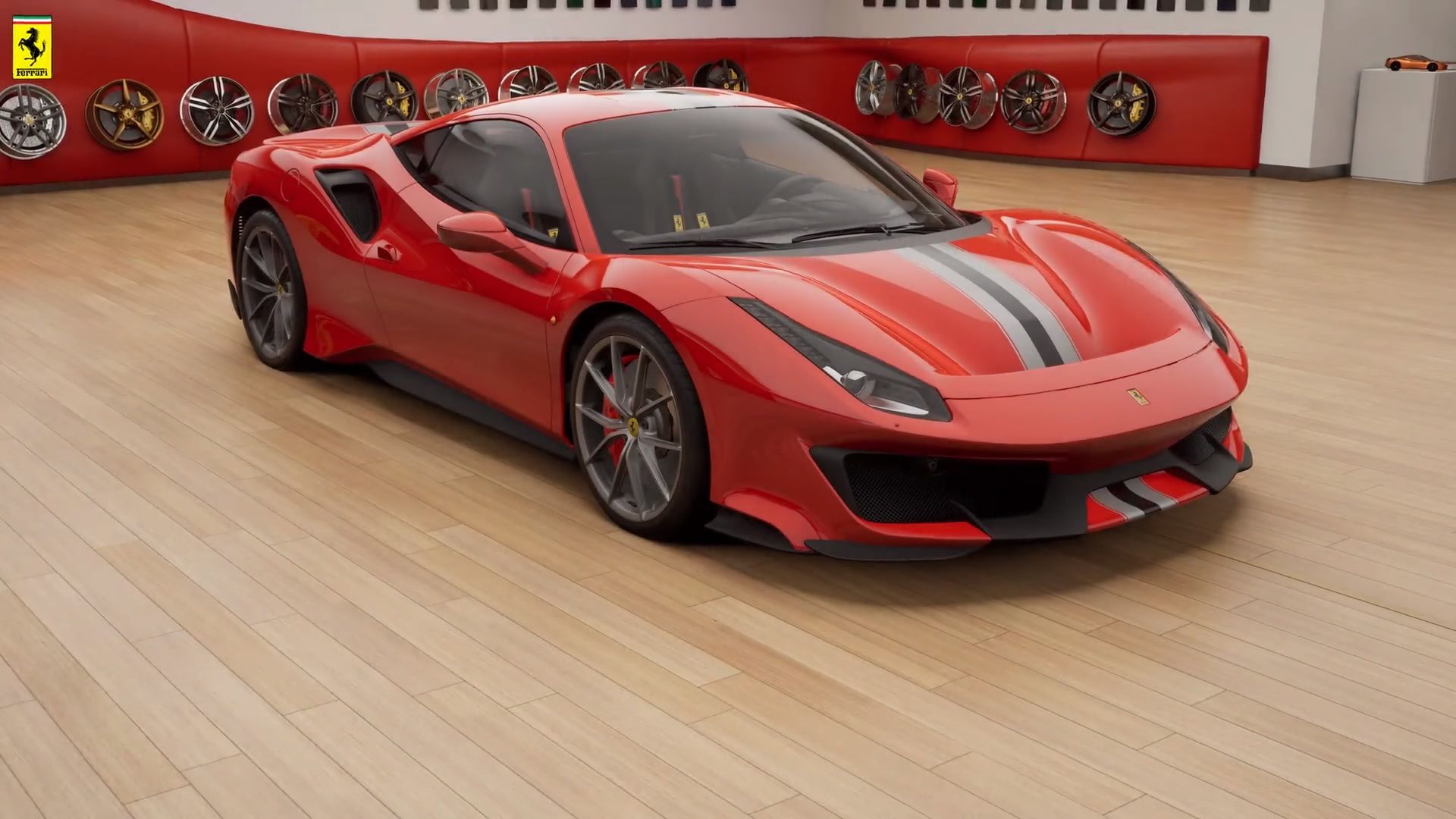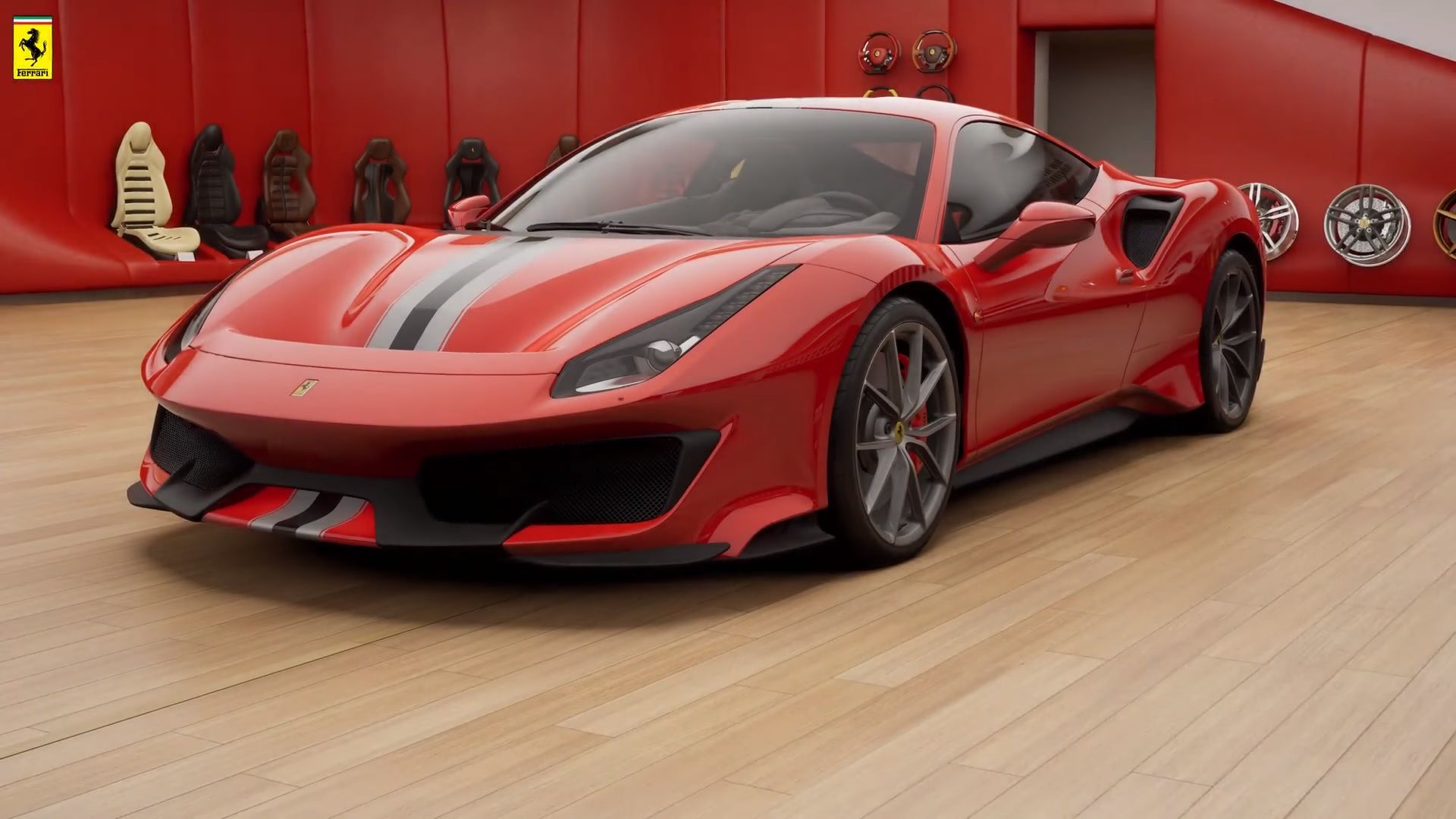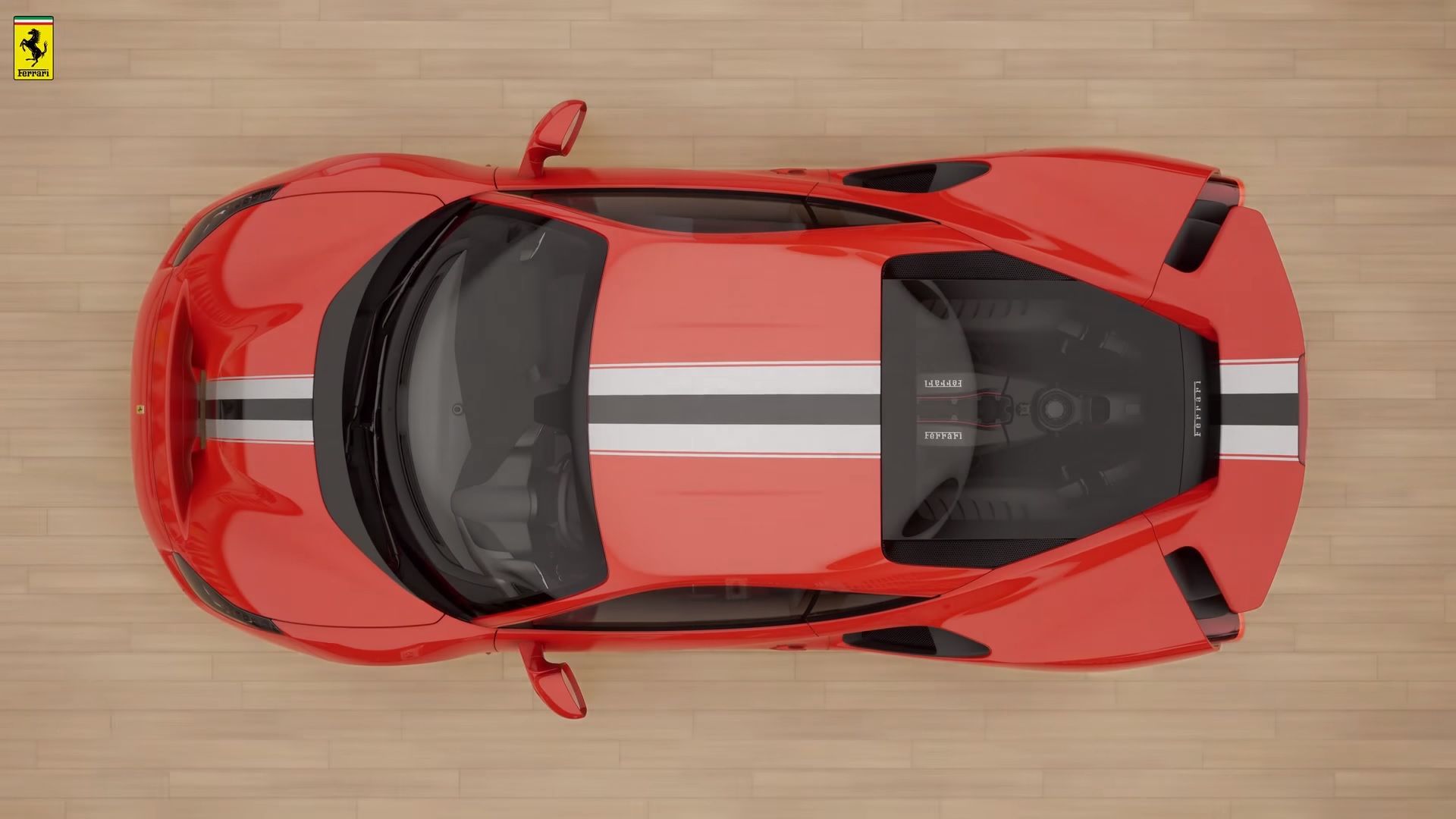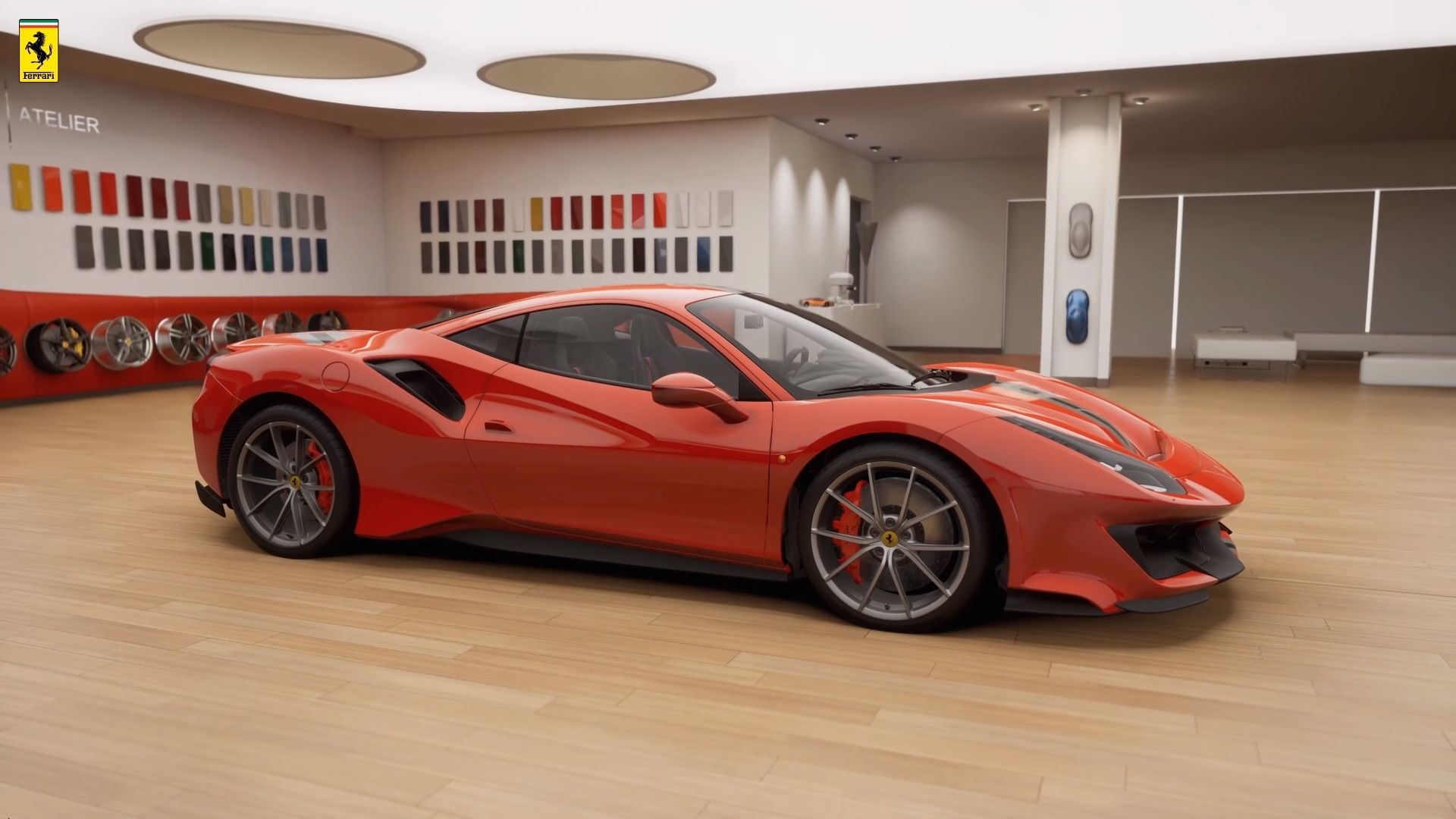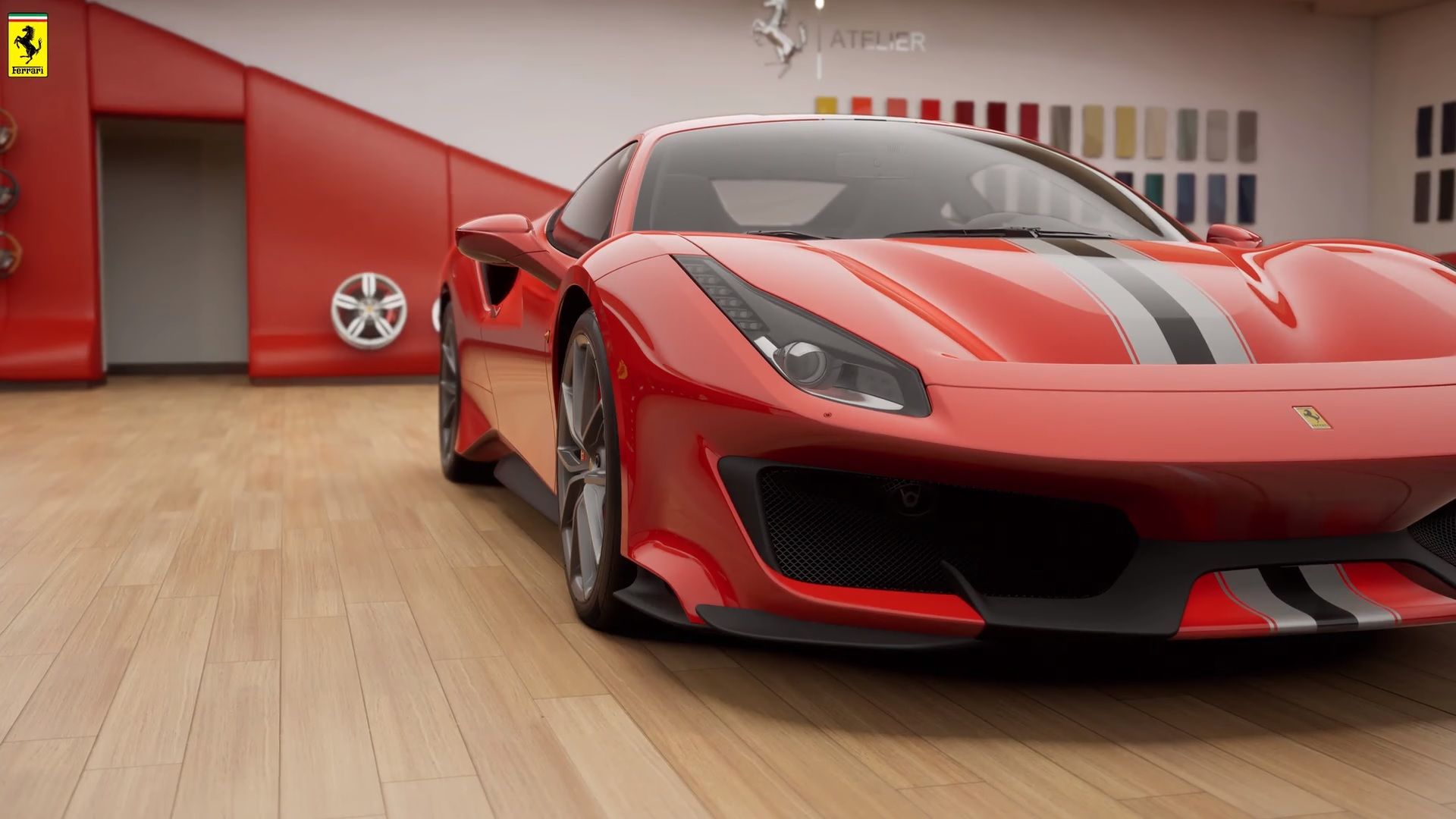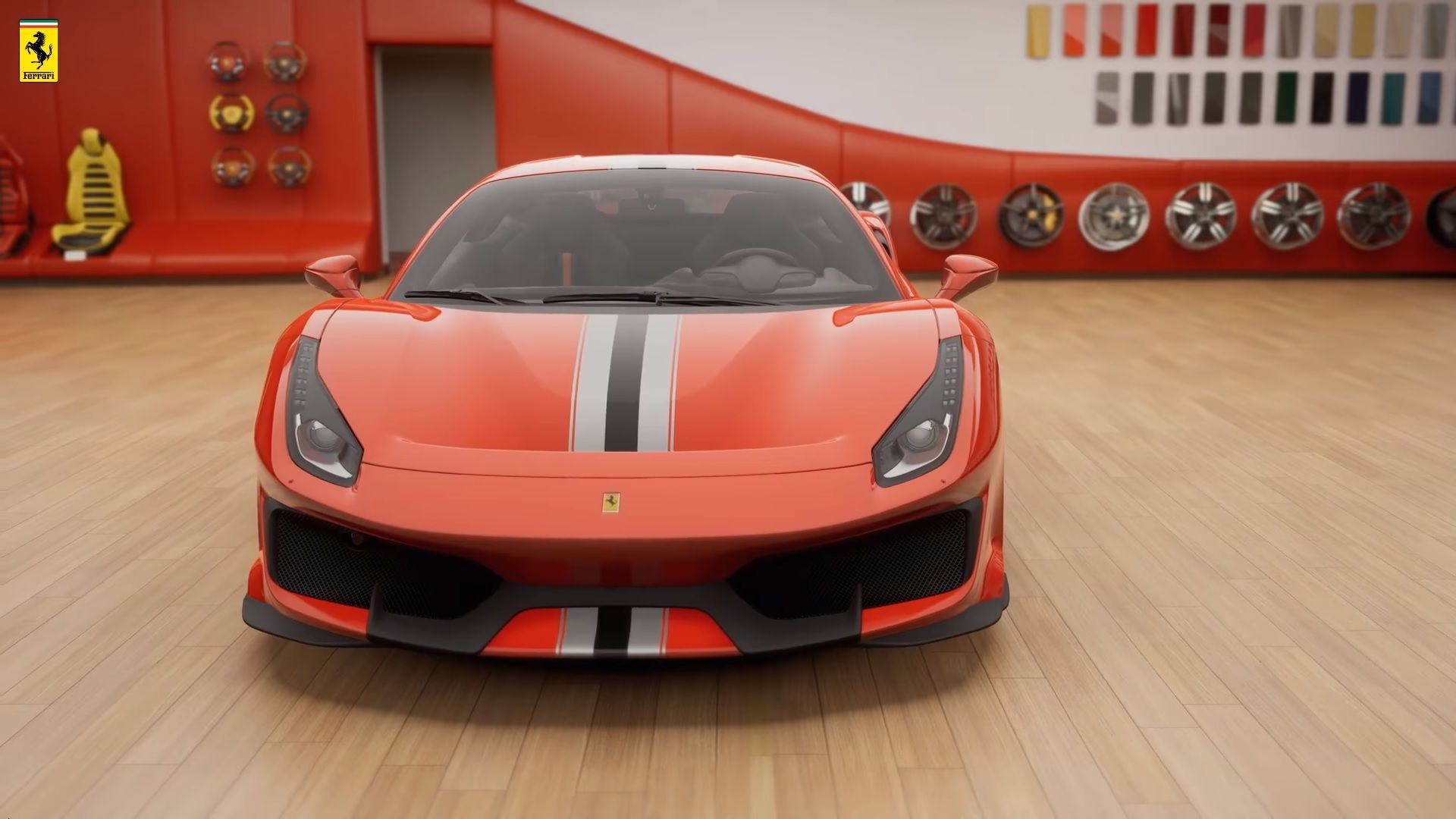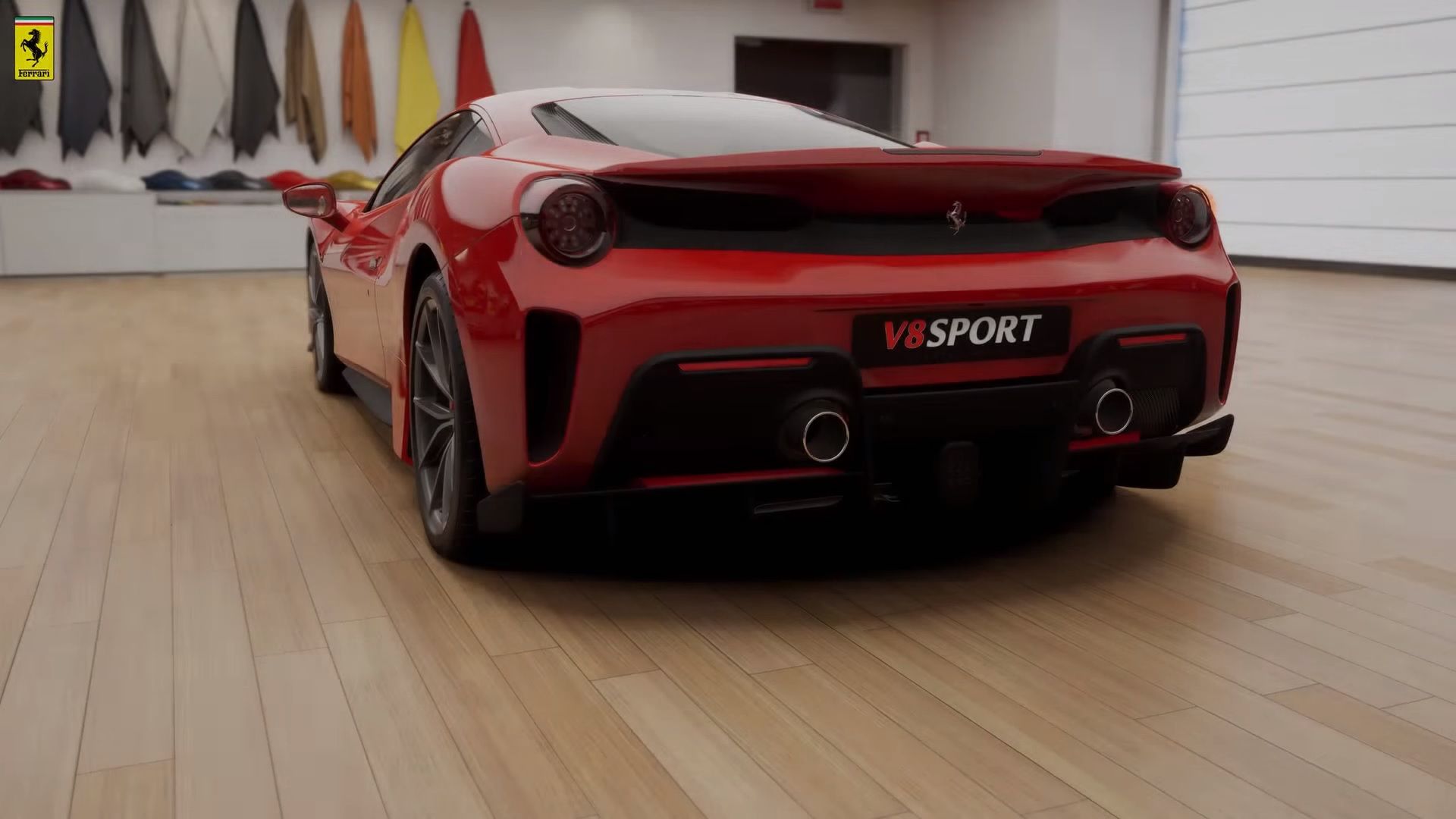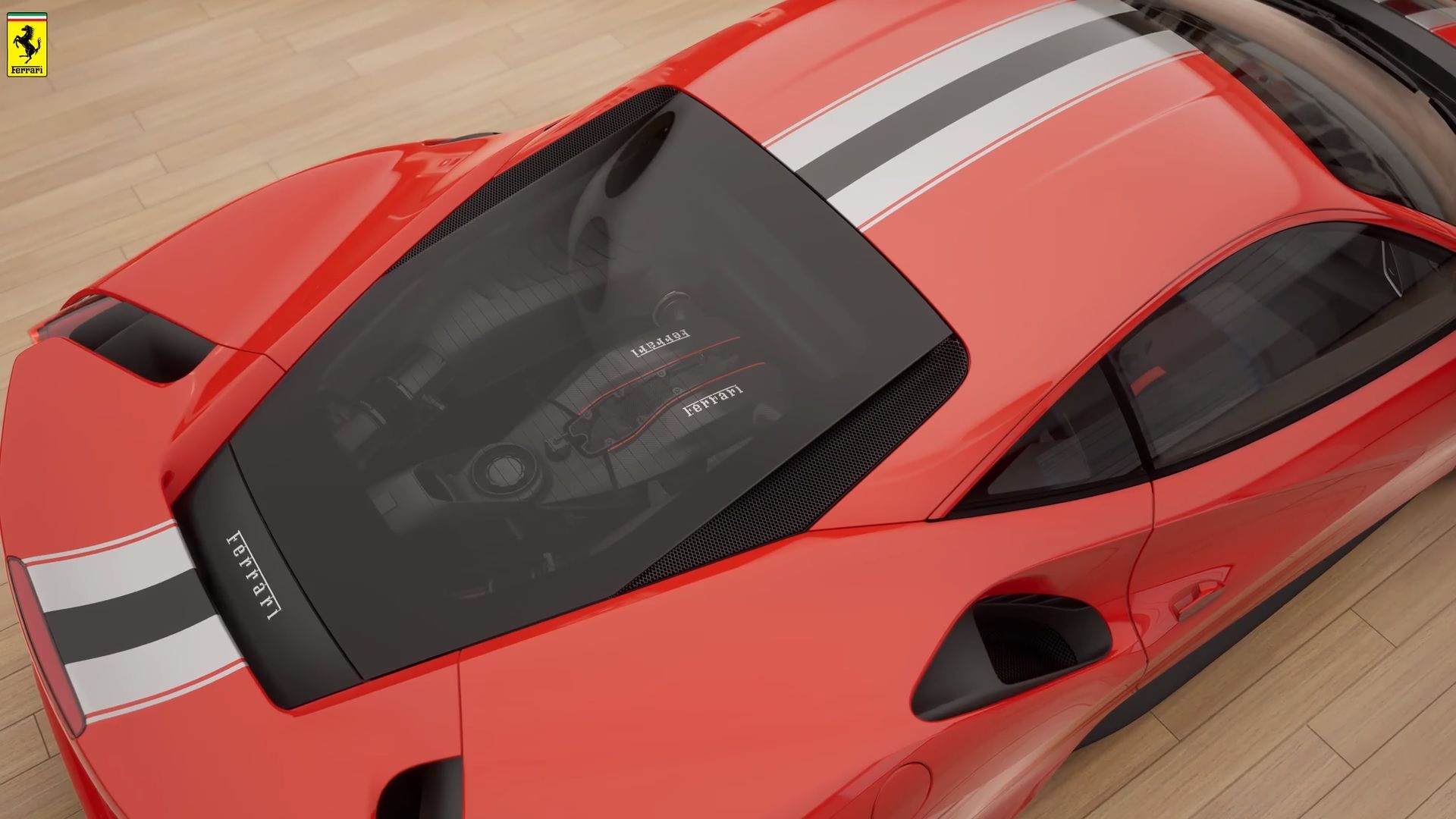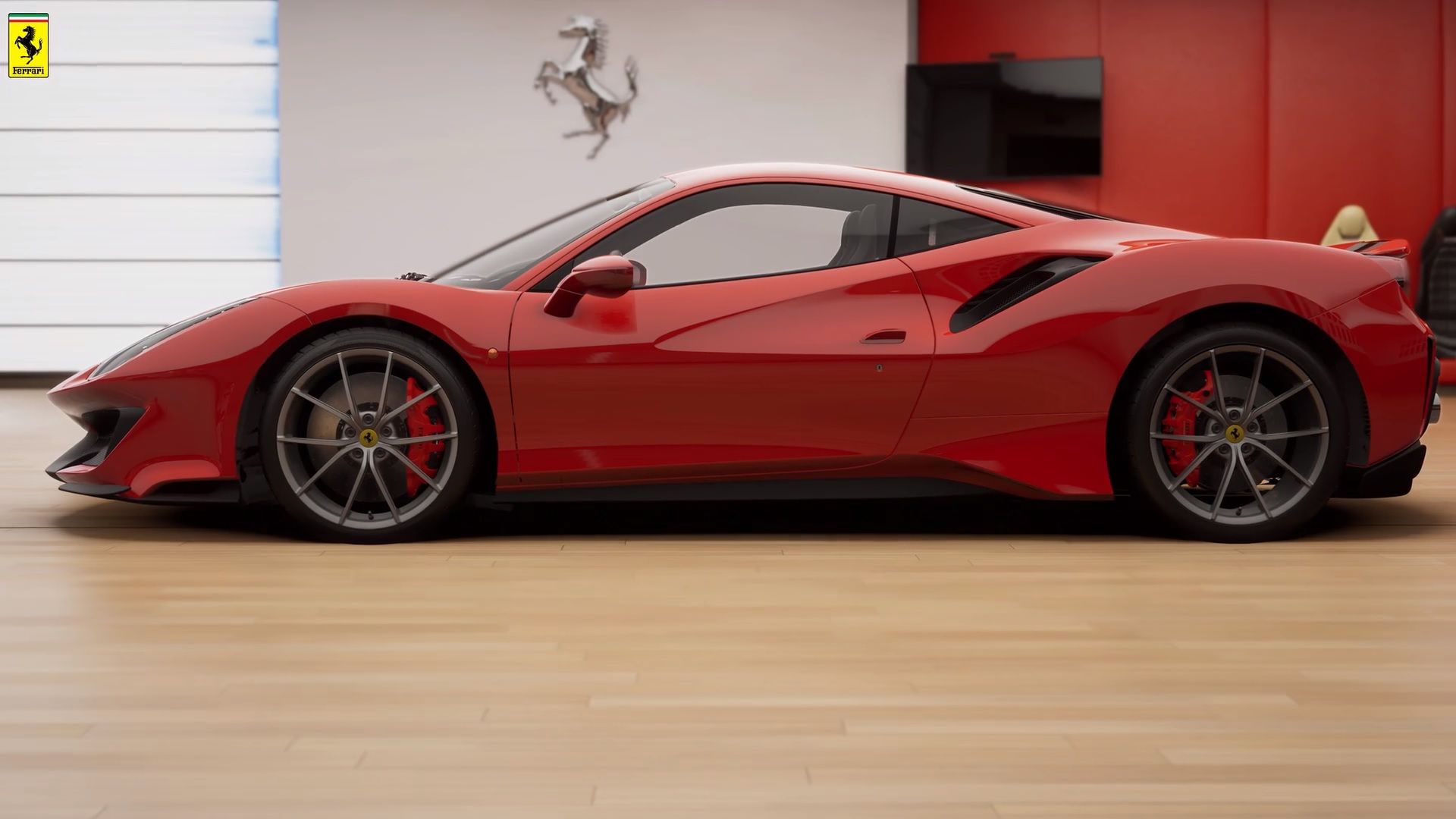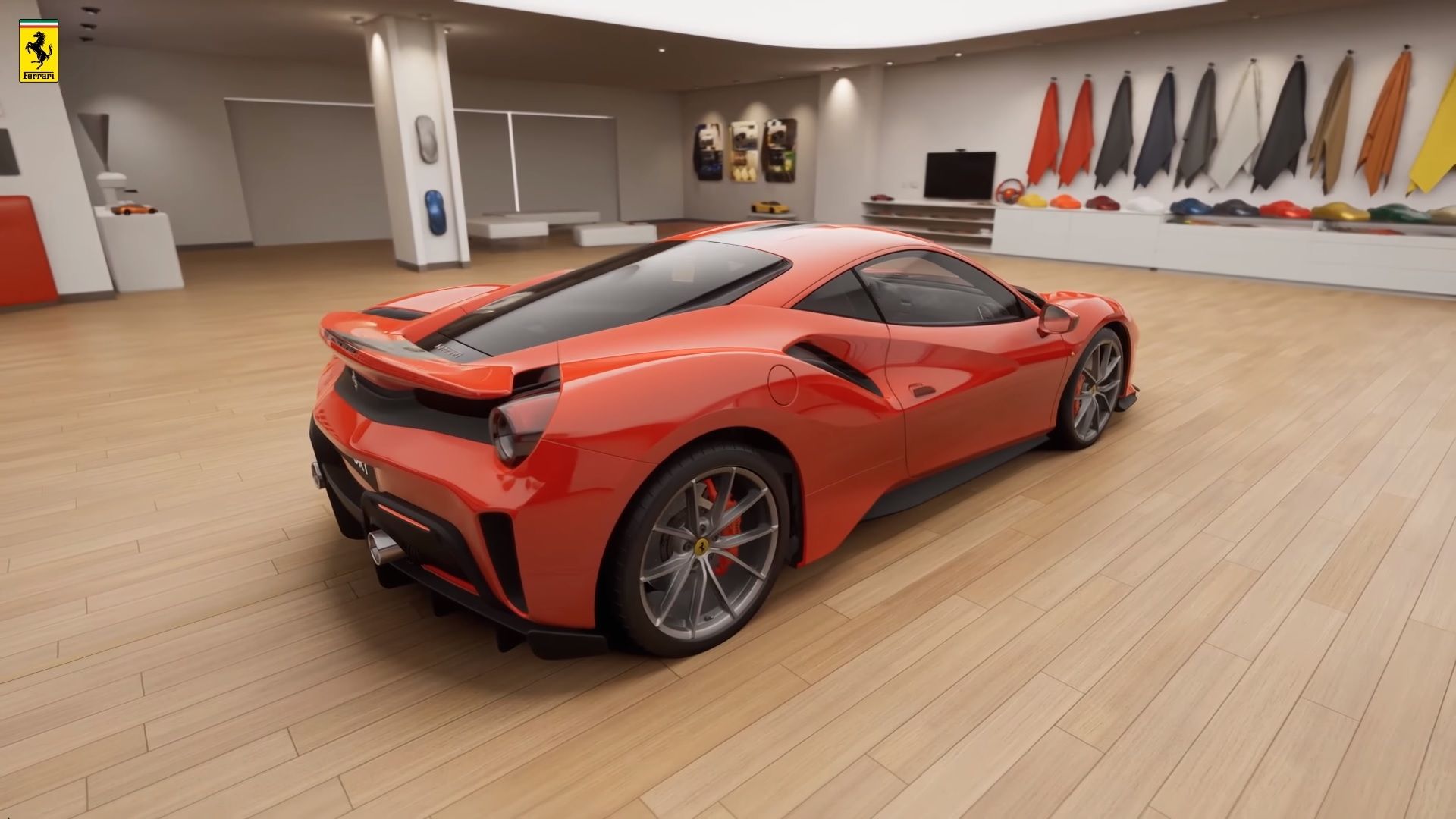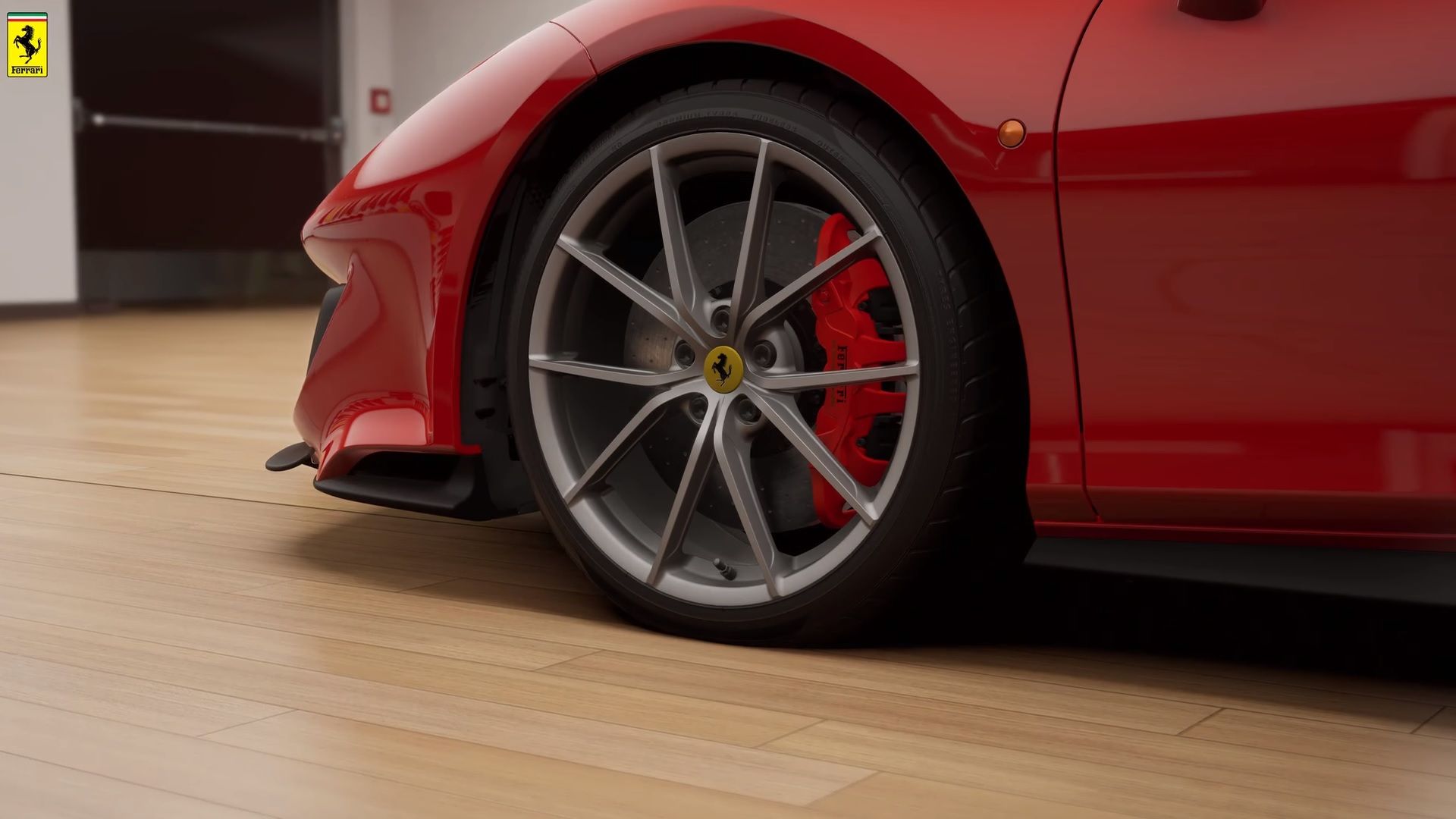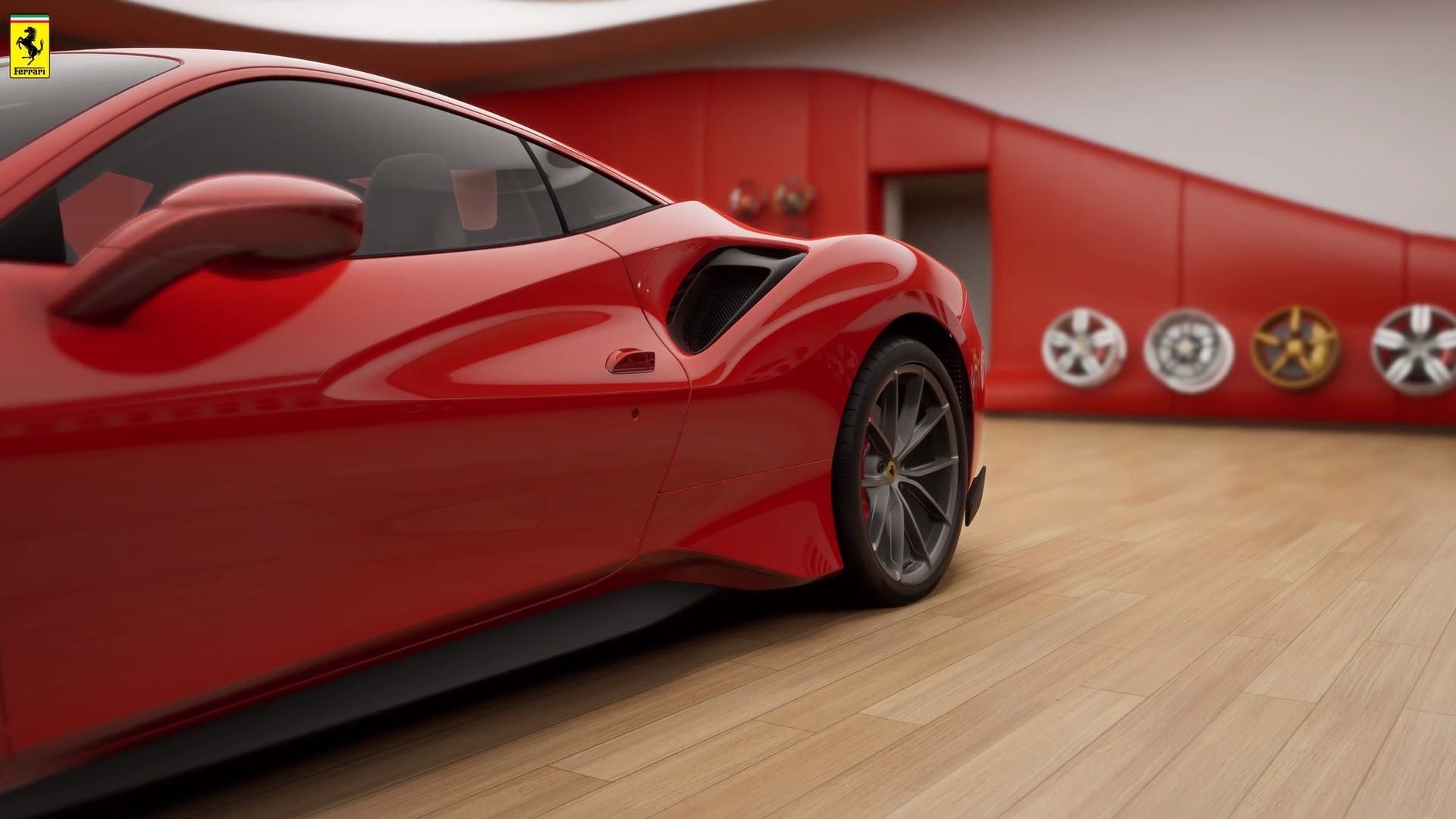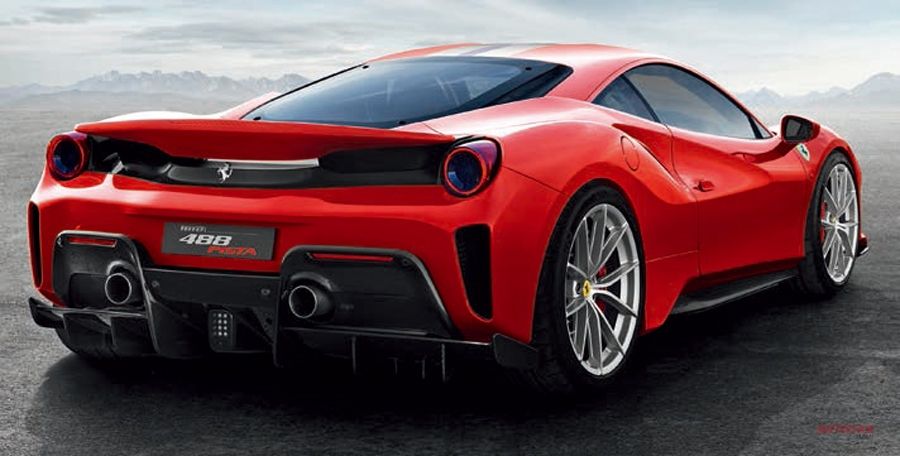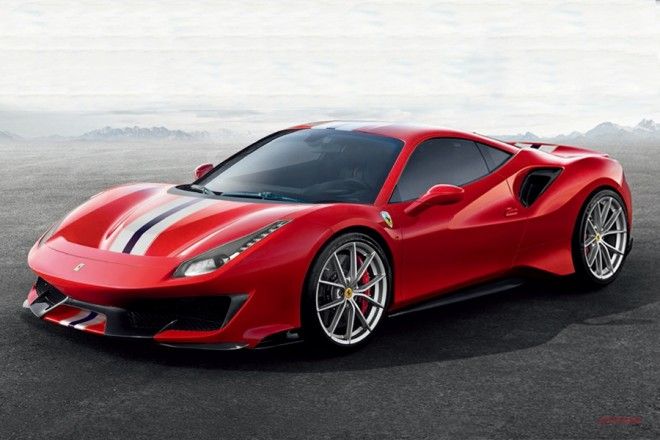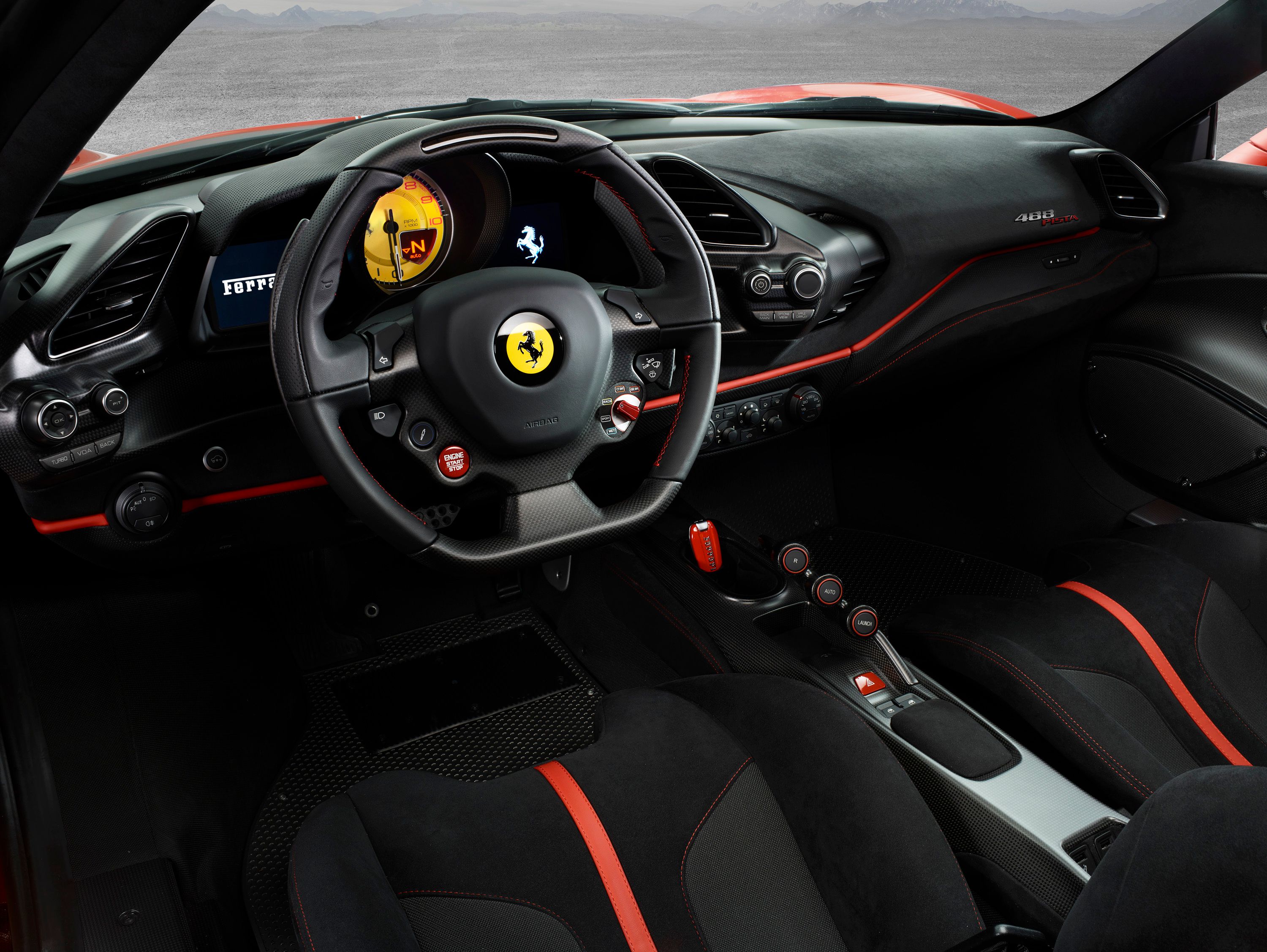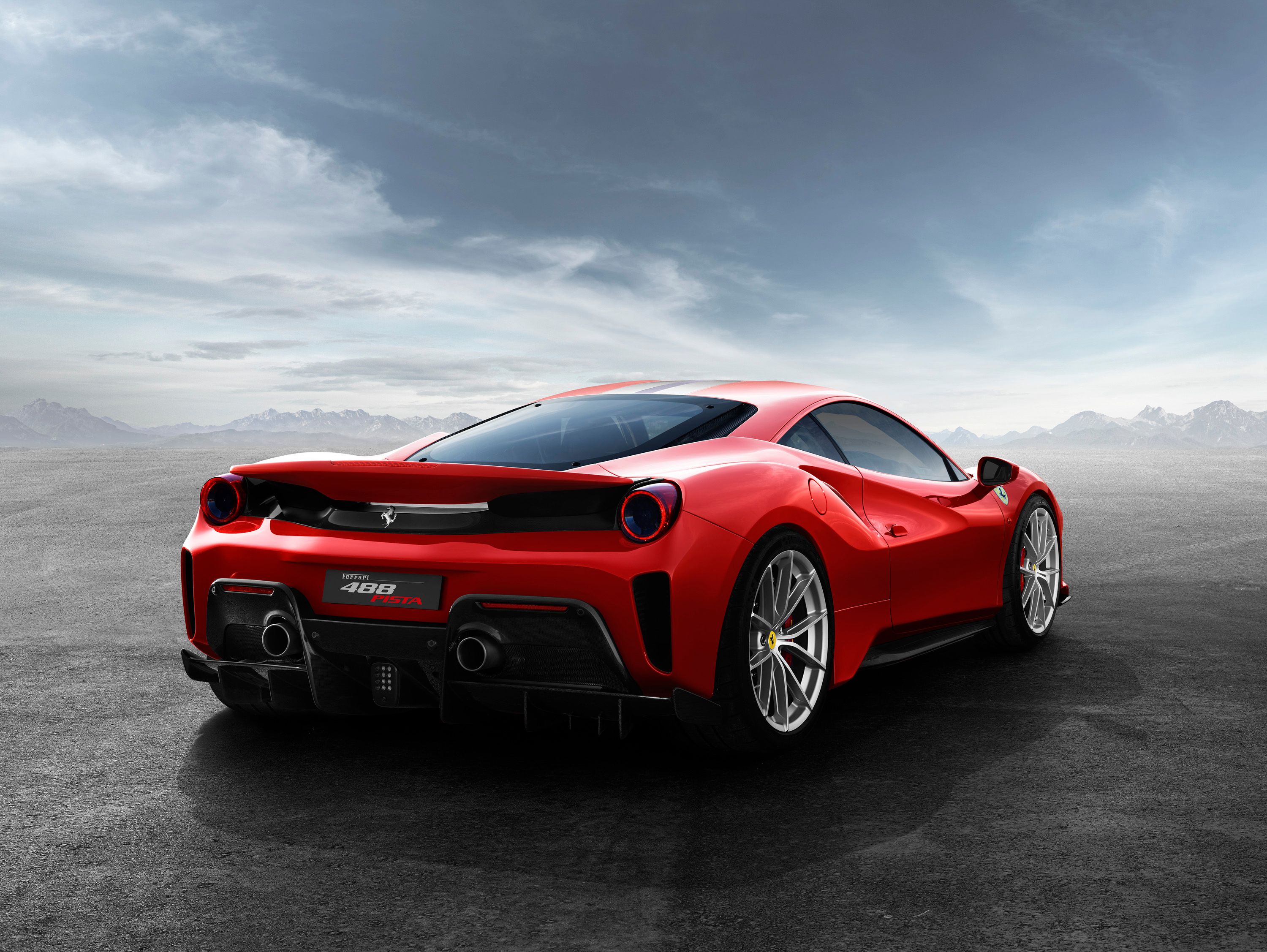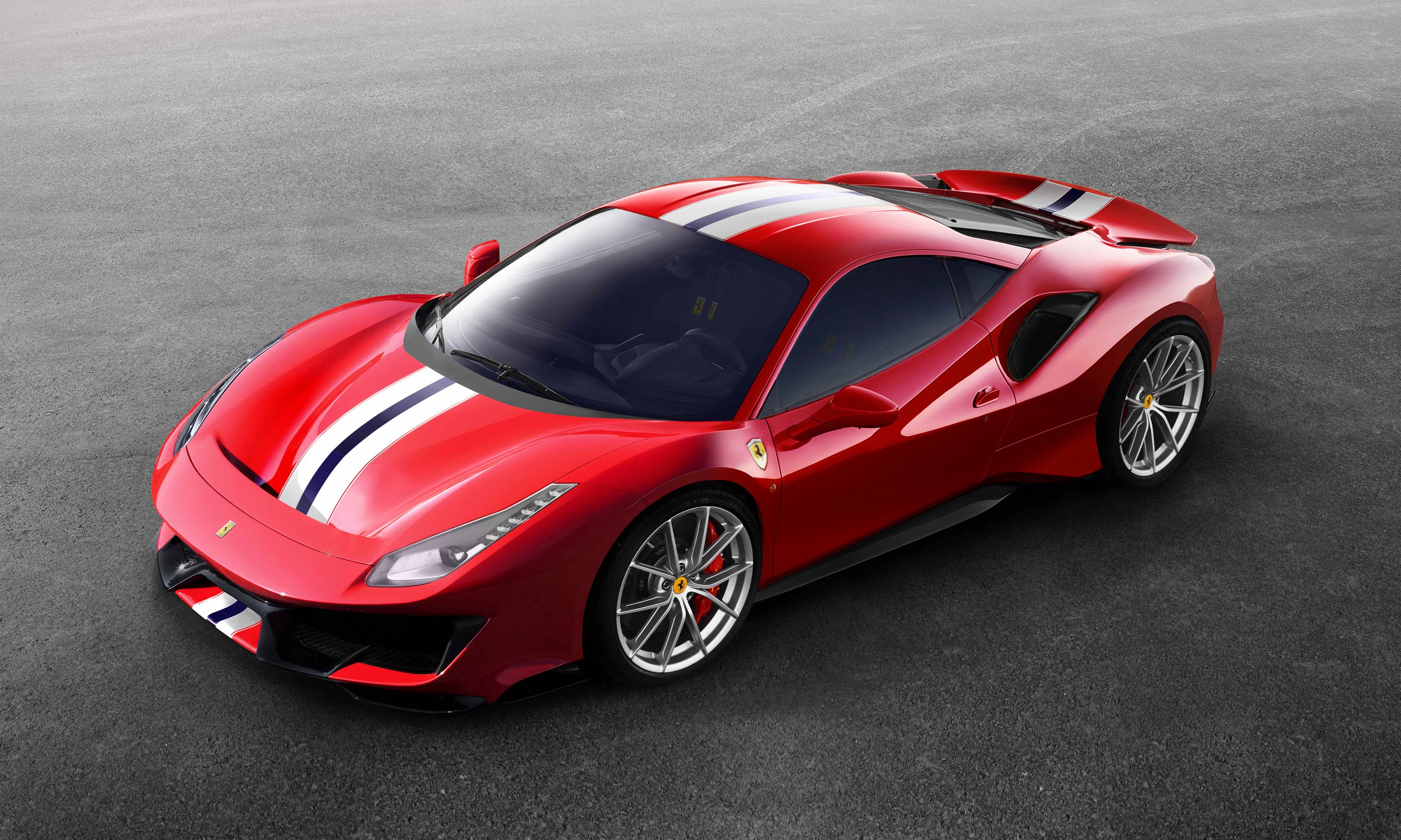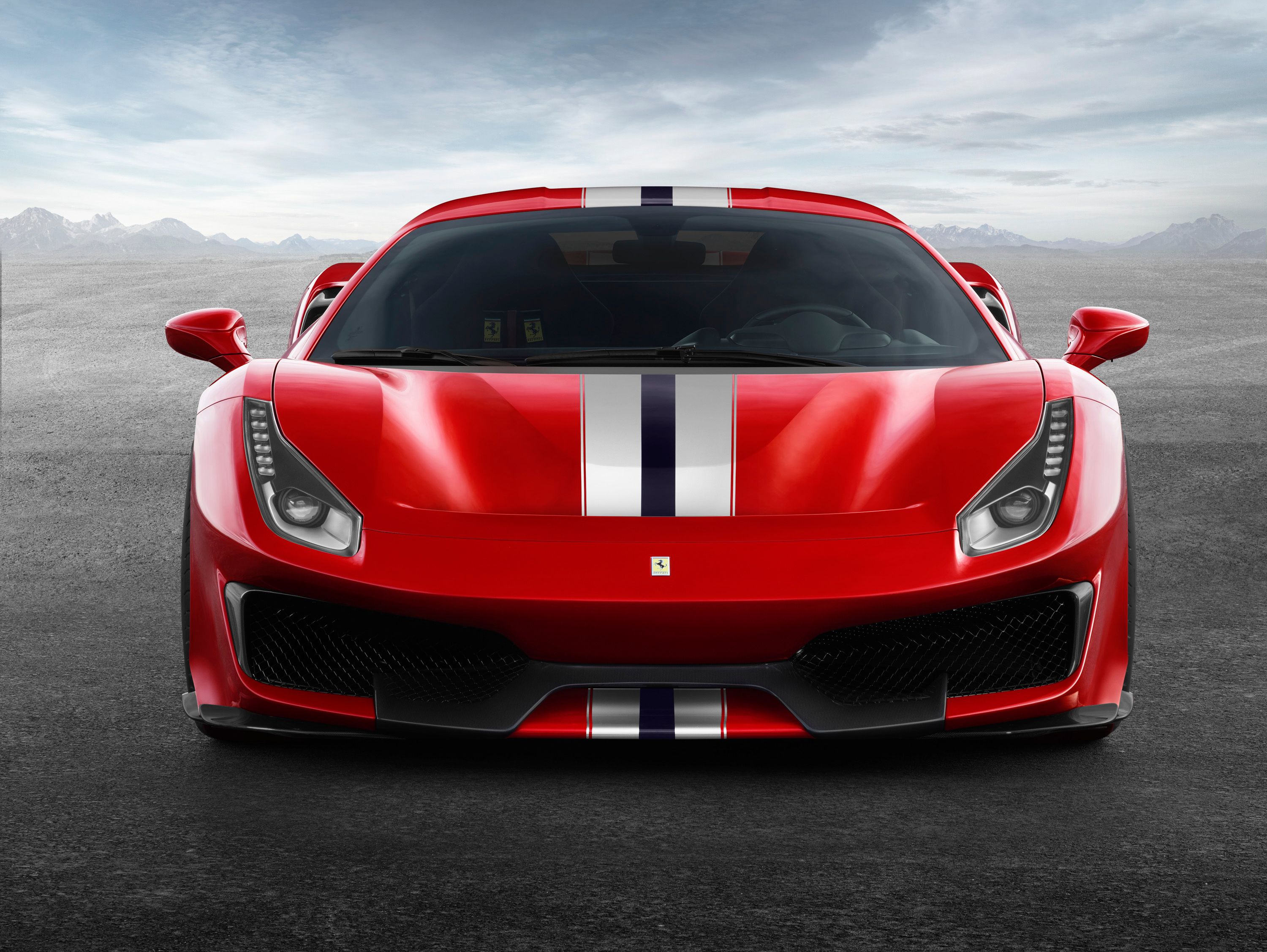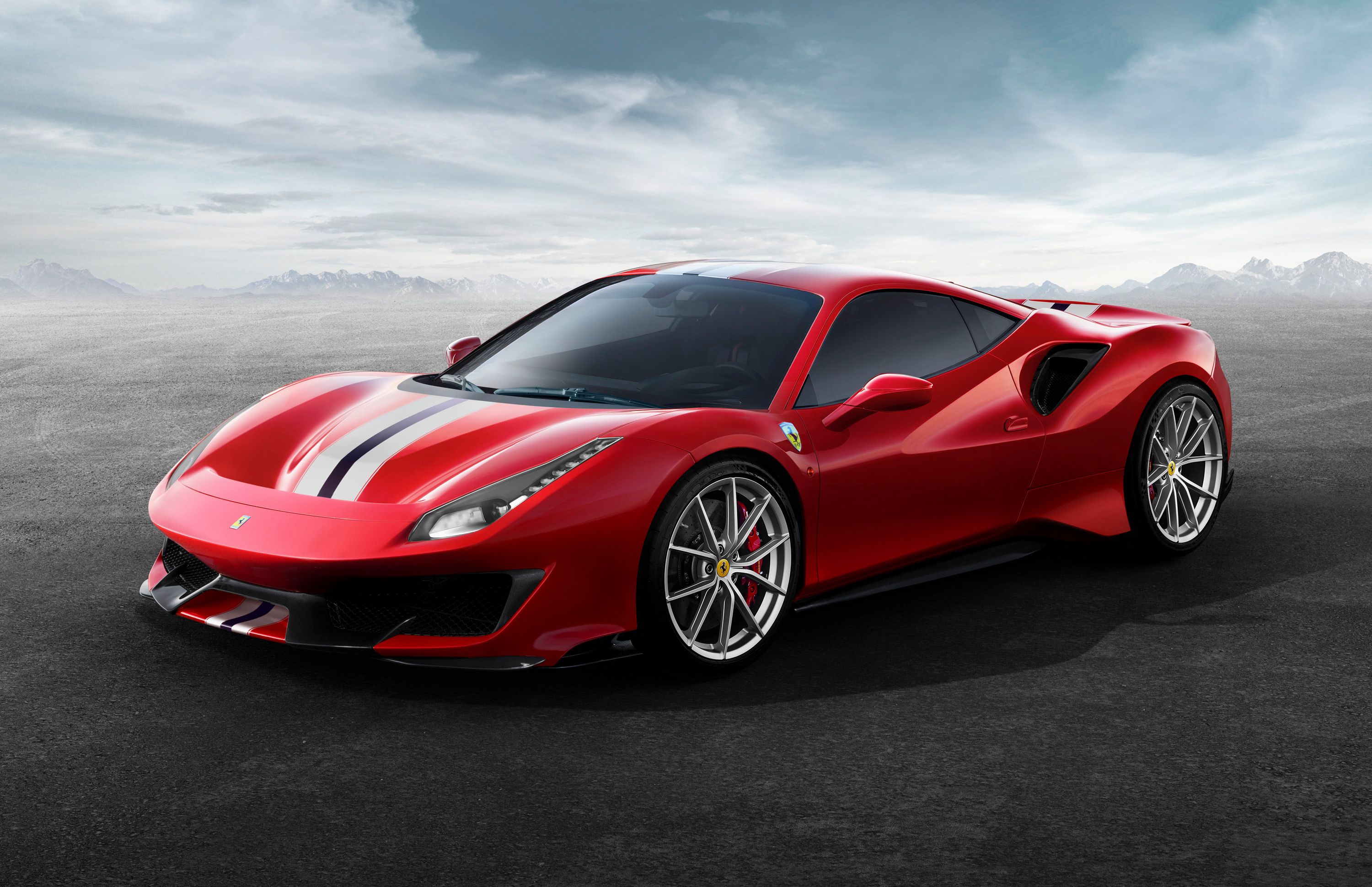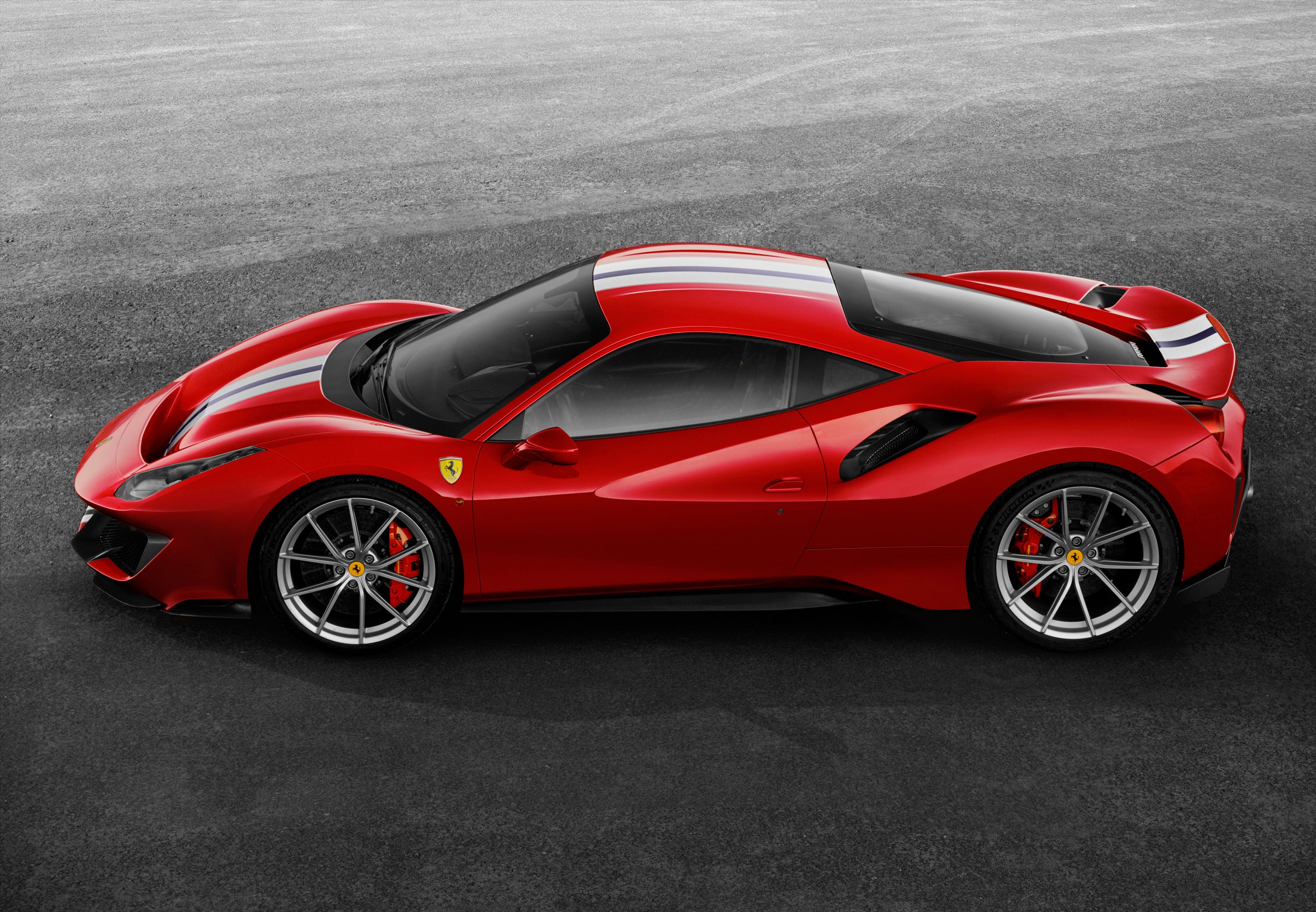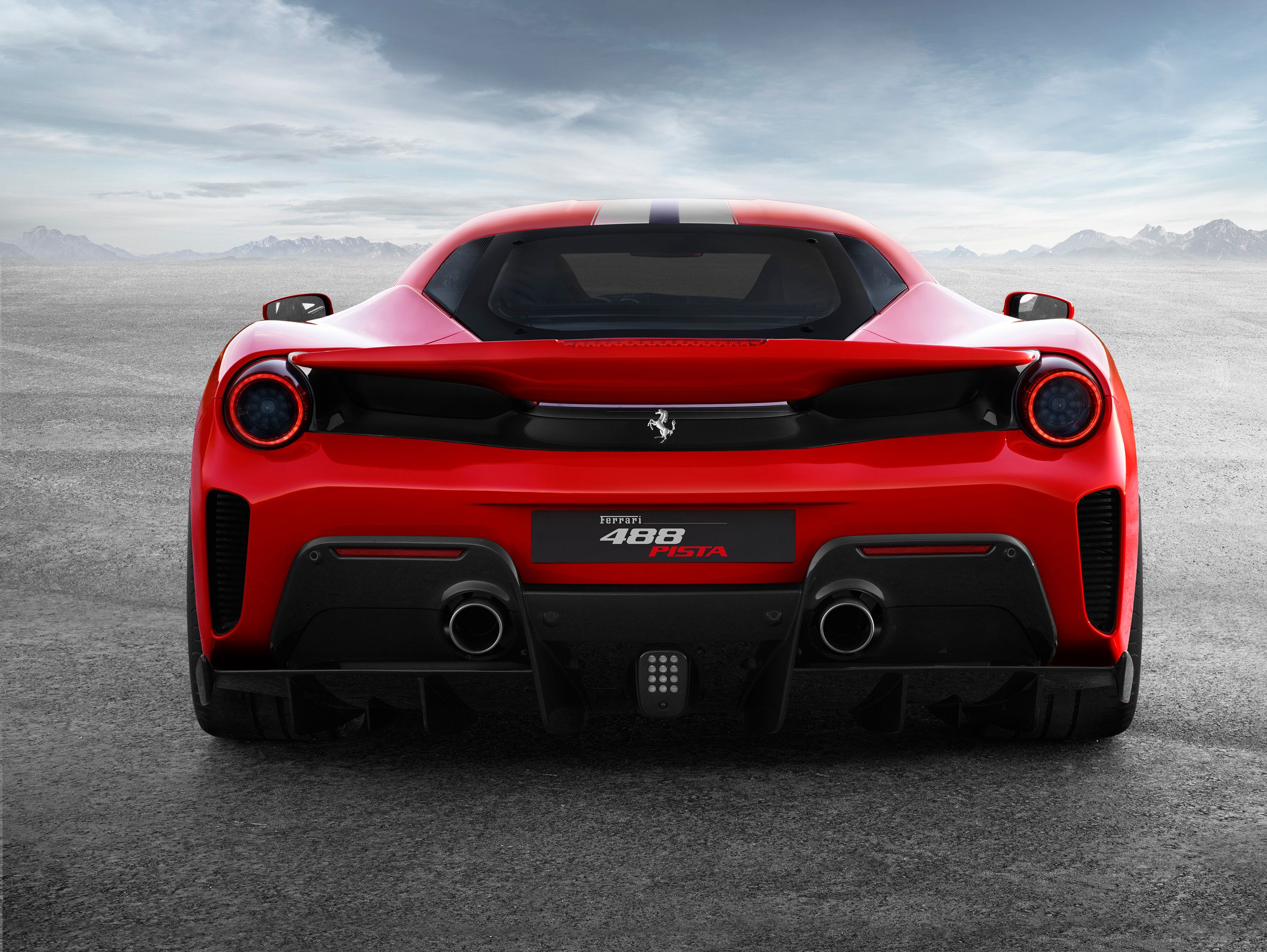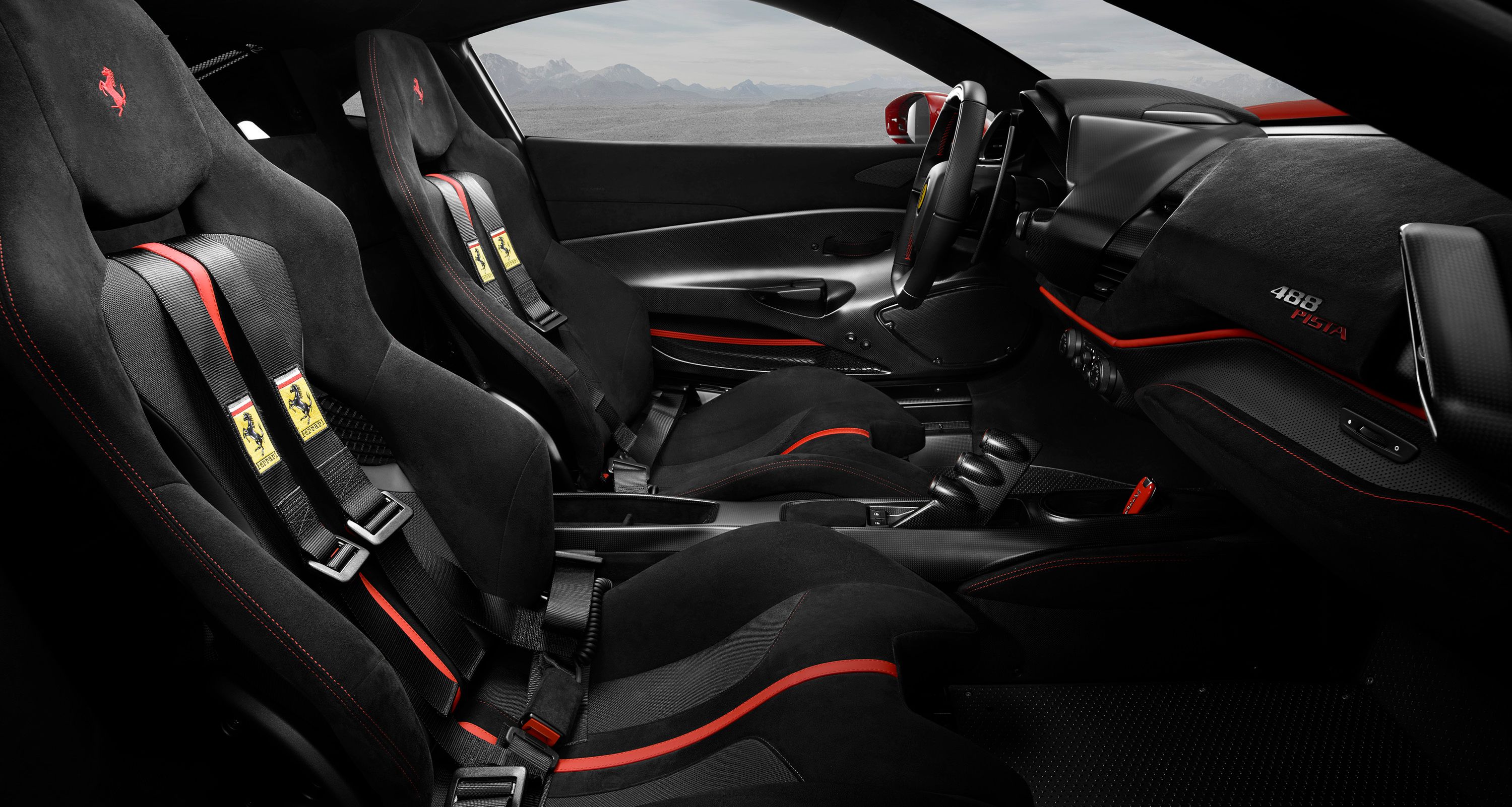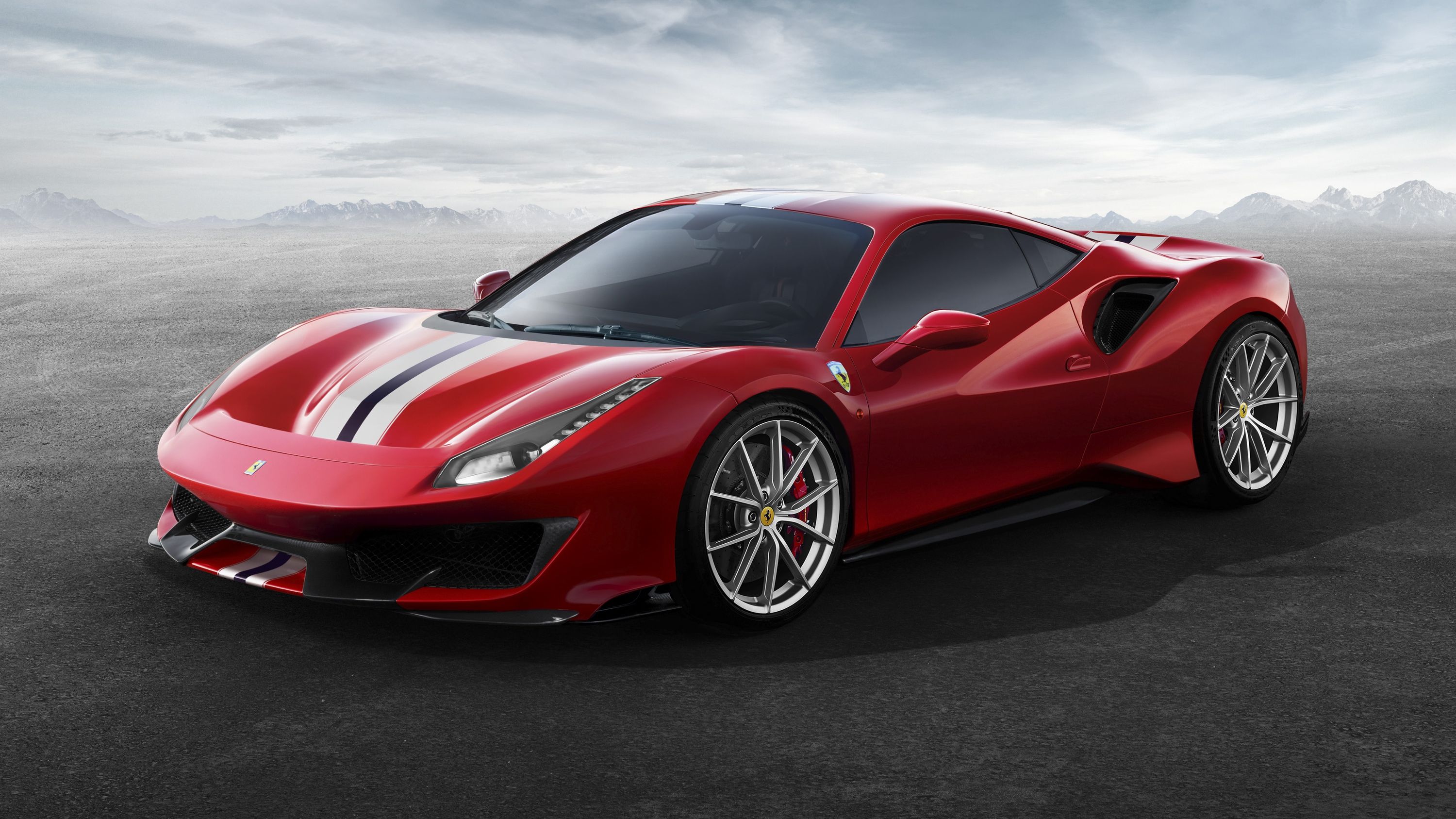Ferrari has developed a fairly predictable pattern when it comes to releasing mid-engine V-8 models. First, we get the "regular" one, and then the lighter, faster, more powerful road-racer variant follows. In 2015, Ferrari replaced the iconic 458 Italia with the turbocharged, 488 GTB. Three years later and the successor to the 458 Speciale is here with more power, less weight, and improved aerodynamics. It's called the 488 Pista, and it's set to make its global debut at the 2018 Geneva Motor Show in March.
The successor to Ferrari’s much acclaimed, V-8-engined special series, which includes the 360 Challenge Stradale, 430 Scuderia, and the 458 Speciale, the 488 Pista is yet another homage to Ferrari's outstanding heritage in motorsport. Much like its predecessors, the Pista was also developed using knowledge from the company's involvement in the FIA World Endurance Championship, in which it has won five manufacturers' titles. Both the race-spec 488 GTE and 488 Challenge served as inspiration for the Pista, also "donating" some of their dynamics and aerodynamic developments.
The 488 Pista is described as Ferrari's most powerful and most advanced special series model so far. Let's find out if it's true in the review below.
Continue reading to learn more about the Ferrari 488 Pista.
2018 Ferrari 488 Pista
- Make: Array
- Model: 2018 Ferrari 488 Pista
- Engine/Motor: V8
- Horsepower: 710
- [do not use] Vehicle Model: Array
Scuderia or GTO? Nope, it's called Pista!
There's been a long debate about the name that Ferrari will use for the beefed-up 488 and the consensus was that the Italian will go with either Scuderia or GTO. That's because everyone thought that since Ferrari is known to shuffle nameplates for this special cars, it would no longer use the Speciale badge. But once prototypes began hitting public roads, some rumors claimed that this model will be used to bring back the GTO name. The iconic letters were used more recently in 2010, when Ferrari launched the 599 GTO, but the nameplate is actually more famous for the 250 GTO from the 1960s and the 288 GTO from the 1980s.
As it turns out, Ferrari said no to both the Scuderia and GTO and decided to go with Pista instead. A new badge for a production Ferrari, "Pista" means "race track" in Italian and was chosen as "a direct homage to Ferrari’s unparalleled heritage in motor sports." I'm not a big fan of the name to be honest, but I understand where Ferrari is going with this.
Exterior
Design-wise, the 488 Pista follows in the footsteps of its predecessors and bridges the gap between the road-going 488 GTB and the race-spec GTE and Challenge models. It's decidedly more aggressive than the 488 GTB, but it doesn't feature the radical rear wing, front bumper, and side skirts of the track-only GTE. It's significantly sportier than the 458 Speciale though.
Changes are quite dramatic up front. The GTB's bumper was simply stripped off the car and replaced with a new element that includes solutions borrowed from motorsport. The first thing catches the eye is F1-inspired S-Duct and the complex splitter design, which feature a ramp angle that was optimized for the 488 GTE to create strong suction for increased downforce. The side vents are huge, while the splitter contains three different elements, including thin canards on each side. This design also makes it seem as if the nose is floating above the bumper.
The hood was redesigned too, with the twin vents on each side of the V-shaped center section seen on the 488 GTB replaced by a massive vent that stretches between the headlamps. Although the rear side of the hood still has a V-shaped layout, the pattern is gone from the nose, which is mostly flat. All told, Ferrari redesigned everything but the headlamps here.
Changes aren't as radical along the sides, but Ferrari made some modifications to the side skirts and the rear fender outlets. The former are a tad wider, while the vents have black trim and are no longer split in two by an horizontal slat. The new design likely improves heating for the beefed-up engine.
The already aggressive rear end of the 488 GTB was given an even more menacing layout for the Pista. The spoiler is bigger, sits higher, and has a dolphin-tail design that keep it "floating" above the decklid. The upper fascia is completely new, now sculpted for improved airflow through and above the spoiler. The diffuser is larger, now taking up almost 50 percent of the rear fascia. The vertical fins are larger and go deeper under the body, something you can only see on race-spec sports cars. Two big vents on each side of the bumper round off the rear end design. The engine hood appears to be similar to the 488 GTB. Although I would have liked to see a louvered cover instead of the usual glass lid, the aggressive diffuser makes up for it.
All these changes provide the 488 Pista with an impressive 20% increase in downforce compared to the 488 GTB, which translates into better performance at the race track.
Interior
Ferrari didn't have much to say about the car's interior, but the available photos reveal a few changes. For starters, almost everything is black. While the regular 488 GTB can be had in various two-tone configurations, the Pista comes with an all-black interior with red accents on the dashboard, seats, and center console. The dashboard now includes a "488 Pista" badge on the passenger side, while the trim around the A/C vents is made of carbon-fiber. While the steering wheel seems identical to the 488 GTB, except for the all-black trim, the instrument cluster features a yellow rev counter instead of the usual red.
The soft-touch carpet on the floor is gone from the Pista and the exposed floor gives the car a race-inspired look. The center console appears to be the biggest change. While the "R," "Auto," and "Launch" buttons are placed along the center section of the console in the 488, Ferrari moved them toward the right, closer to the passenger section. The console is also made of carbon-fiber now, an upgrade from the aluminum seen in the regular 488 GTB. Finally, the Alcantara seats have a sportier layout that should offer increased support during spirited driving. Of course, Ferrari will offer a wide array of options for the Pista, but specific info will become available after the official launch.
Drivetrain
While some rumors claimed that Ferrari might use a KERS system in addition to the twin-turbo, 3.9-liter V-8 of the 488, the Pista doesn't feature a hybrid drivetrain. But the V-8 mill was heavily revised in order to deliver more power, now being rated at 720 PS. This converts to 710 horsepower, which is precisely 50 horses more than the standard 488 GTB. It's the largest ever increase in engine power for this series and it makes the 488 Pista the most powerful V-8 Ferrari ever!
Naturally, the 488 Pista is quicker too. Sprinting from 0 to 62 mph takes 2.85 seconds, almost two tenths quicker than both the 488 GTB and the 458 Speciale. The 124-mph benchmark comes in 7.6 seconds, a whopping 0.7 seconds faster than the 488 GTB. Compared to the old 458 Speciale, it gets there two full seconds quicker. Top speed also sees a significant increase from 205 to 211 mph.
All these performance gains aren't all about extra power though. The Pista is also lighter, tipping the scales at only 1,280 kg (2,822 pounds) dry. That's 90 kg (198.5 pounds) less than the 488 GTB. The engine is lighter too thanks to solutions adopted from the 488 Challenge race car.
Finally, vehicle dynamics were redesigned to enhance driving pleasure and make the car’s full potential available to all drivers. The most notable update is the Side-Slip Angle Control system, now available in its sixth iteration. SSC 6.0 incorporates systems such as E-Diff3, F1-Trac, the magnetorheological suspension (SCM) and, for the first time ever, the Ferrari Dynamic Enhancer. The latter is a world-first feature that uses bespoke software to adjust the brake pressure at the calipers.
Prices
I expect 488 Pista pricing to start somewhere between $320,000 and $340,000. For reference, the standard 488 GTB retails from around $250,000 in the United States.
Competition
Lamborghini Huracan Performate
Introduced in 2017, the Huracan Performance is a living legend. It’s the most menacing road-legal Lambo built to date and a race car in disguise. Based on the familiar Huracan, the Performante sports an intricate aerodynamic package and a revised chassis for enhanced performance, while a retuned 5.2-liter V-10 engine sends 631 horsepower and 442 pound-feet of torque to all four wheels. The Performance might also be as quick as the 488 Pista thanks to its 0-to-60 mph sprint of only 2.8 seconds. What’s more, this Lambo is fast on race tracks too, having set a new Nurburgring record for production cars at 6:52.01 minutes. It has pricing on its side too, retailing from $274,390, around $50K less than what the Ferrari 488 Pista is expect to cost.
Read our full story on the 2017 Lamborghini Huracan Performance.
McLaren 750LT
If you haven't heard of the McLaren 750LT, it's most likely because this car doesn't exist yet. The name is also our own speculation, based on the output this version is likely to have. But as you might have already guessed, it will be a successor to the awesome 675LT and will be based on the brand-new 720S. Much like the Ferrari, it will be a beefed-up, track-prepped version of the standard model. Just like the 675LT, it will have a comprehensive aero kit, a tweaked chassis for improved performance, and a more powerful engine. My guess is that McLaren will increase output from 710 to 740 horsepower, which translates into 750 PS, hence the 750LT name. With such a powerful twin-turbo, 4.0-liter V-8 under the hood, the 750LT should need only 2.7 seconds to hit 60 mph from a standing start, to go with a top speed of nearly 210 mph. This McLaren won't be cheap though, with a sticker likely to surpass the $375,000 mark. Production will also be limited to 500 unit, which means it will sell out in a few weeks. So have them checkbooks ready!
Read our speculative review of the upcoming McLaren 750LT.
Porsche 911 GT3 RS
Porsche's very own "Scuderia" model for a couple of decades, the GT3 is probably living its final naturally aspirated years on the market. Unveiled at the same time as the 488 Pista, the latest 911 GT3 RS stands out thanks to its all-motor layout and rear-engined configuration. Using the same 4.0-liter flat-six as its predecessor, the GT3 RS comes with 520 horsepower. Yes, it's far from impressive when compared to the Pista, more so if we look at its 0-to-62 mph rating of 3.2 seconds, but hey, if you're into naturally aspirated engines, you don't have that many choices nowadays. Just like the Pista, the GT3 RS is inspired by Porsche's 911-based race cars and looks pretty aggressive front and rear. It features rear-axle steering and a couple packages that further enhance performance. The really good news is that the GT3 RS is significantly more affordable than the Ferrari, retailing from $187,500 in the U.S. They might not available for long though, so make sure you grab one while you still can.
Read our full story on the Porsche 911 GT3 RS.
Conclusion
Having seen its exterior design and performance specs, it's now safe to say that the 488 Pista is the most aggressive V-8-powered Ferrari ever made. It's also the most powerful yet but more importantly, it's significantly lighter and quicker than its predecessor, the 458 Speciale. And just to get a better idea of how this lineage evolved, the 360 Challenge Stradale had 420 horsepower in the early 2000s. Less than two decades later, the 488 Pista is almost 70 percent more powerful. How's that for evolution?
References
Ferrari 488
Read our full review on the 2016 Ferrari 488 GTB.
Ferrari 458
Read our full review on the 2014 Ferrari 458 Speciale.
Read our full review on the 2008 Ferrari F430 Scuderia.
Read our full review on the 2004 Ferrari 360 Challenge Stradale.
Read more Ferrari news.
Read more Geneva Motor Show news.


